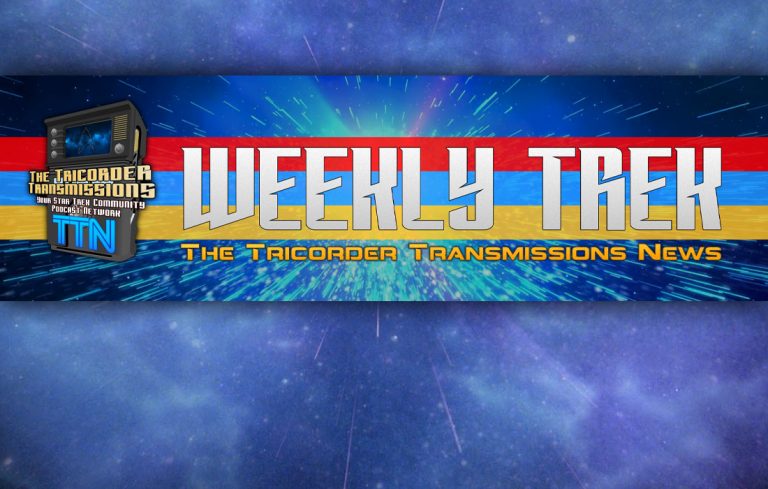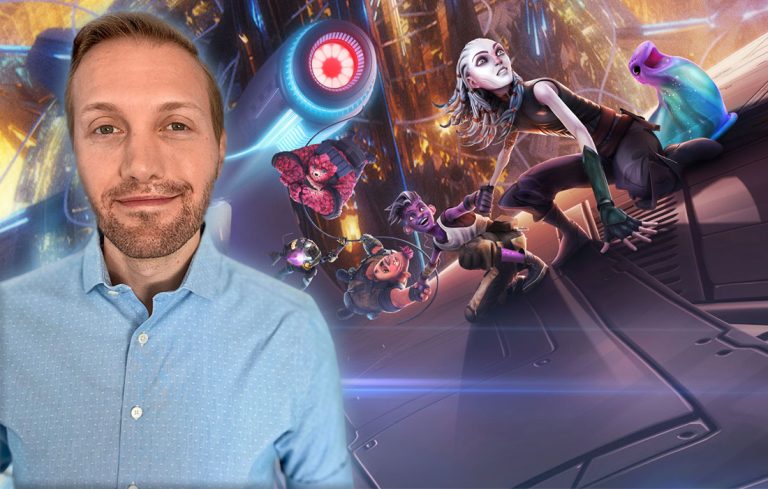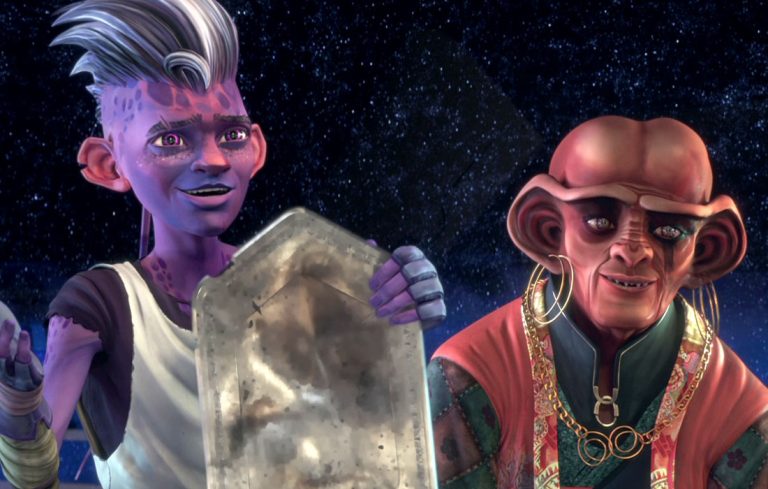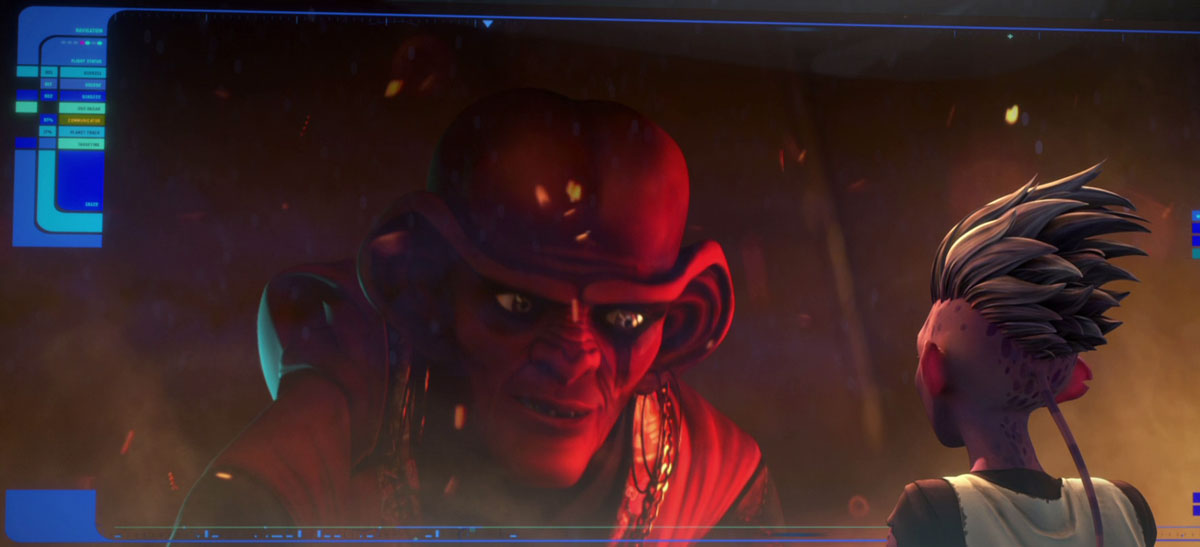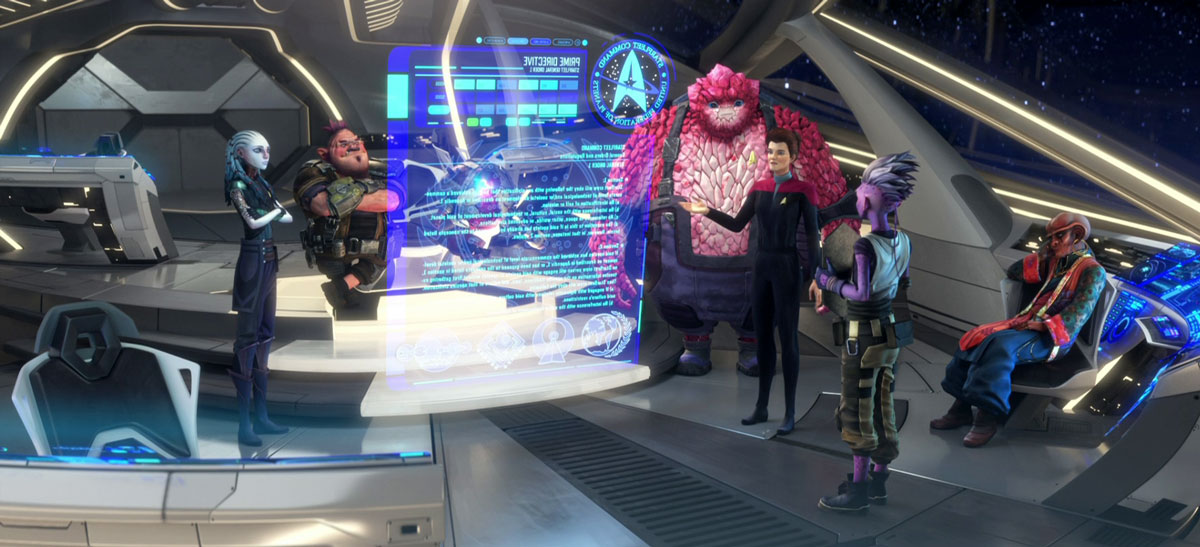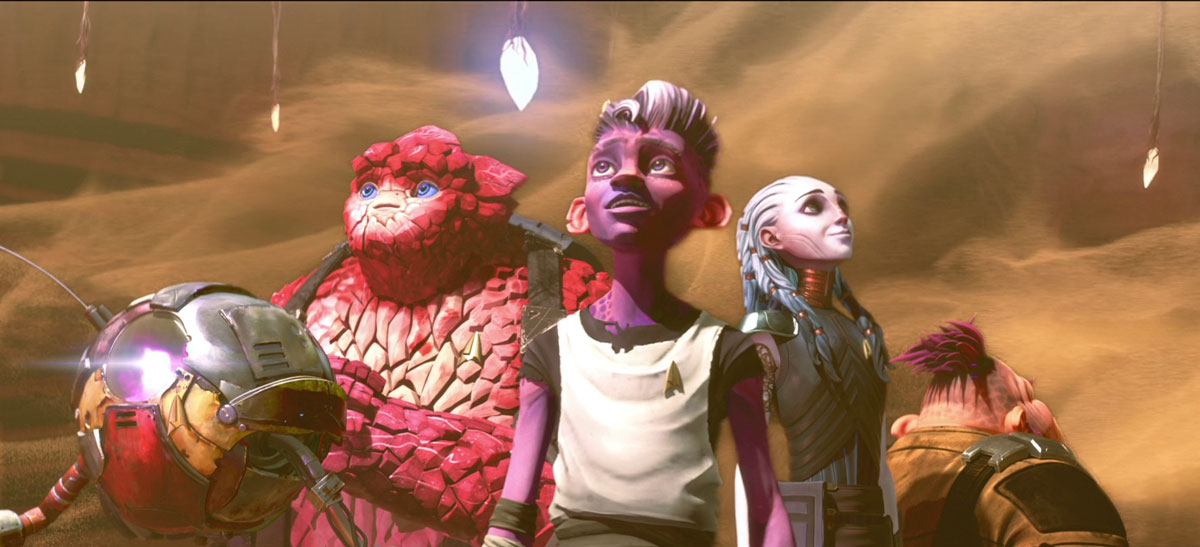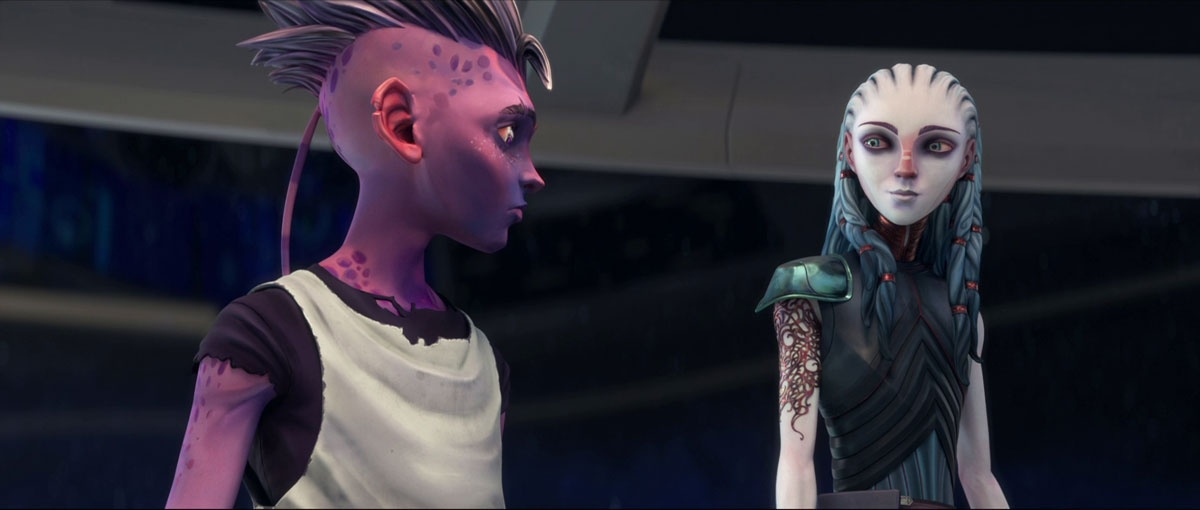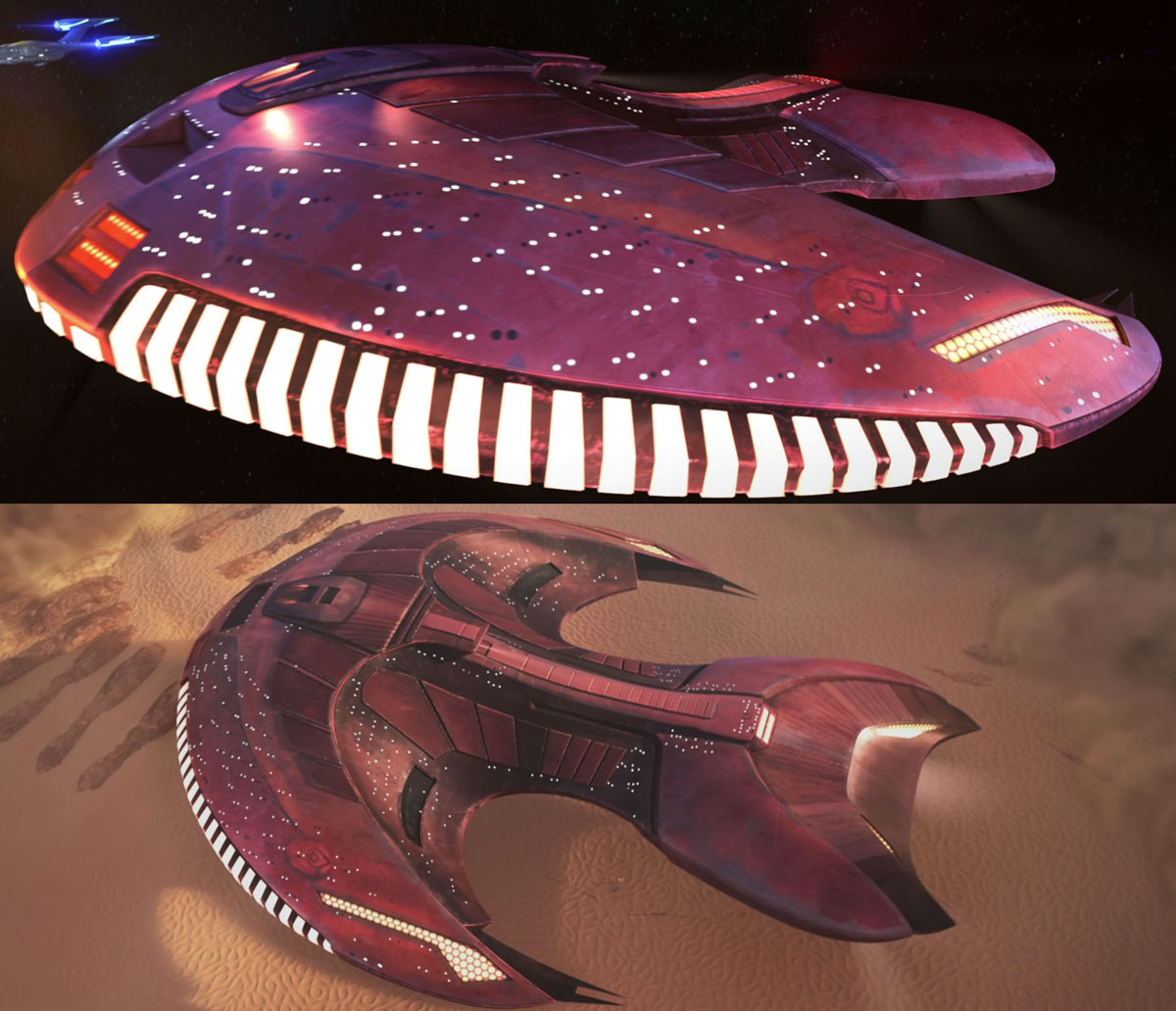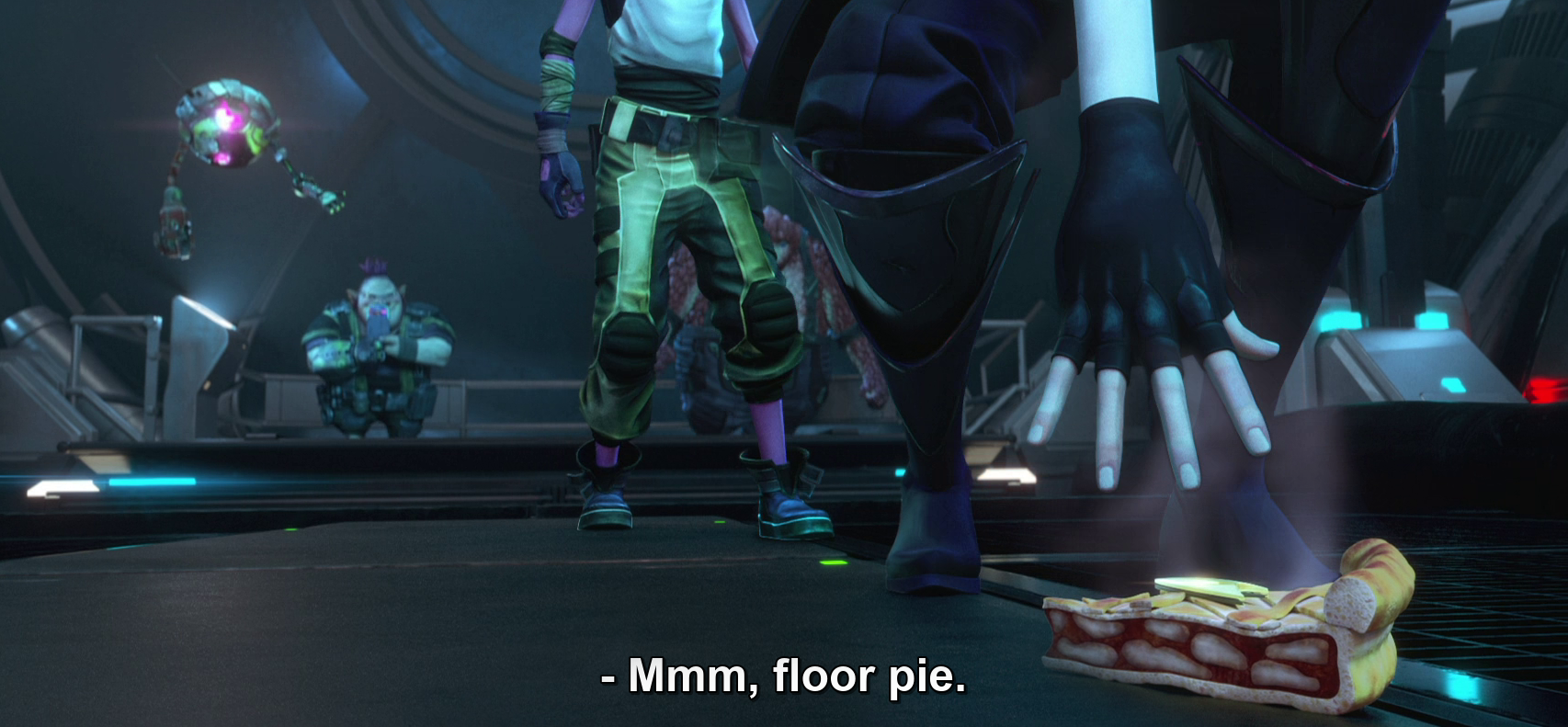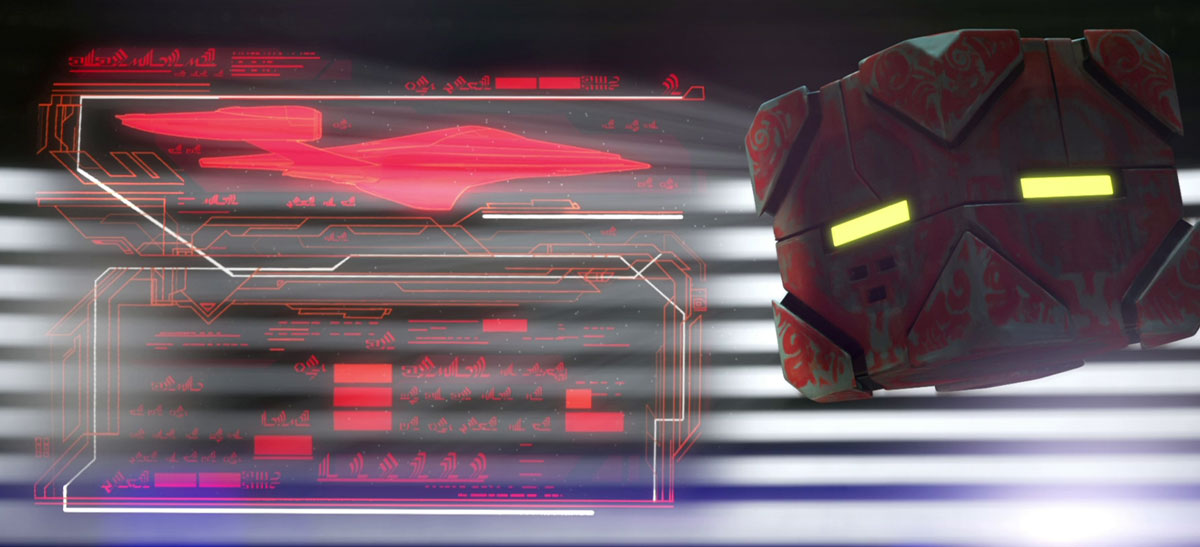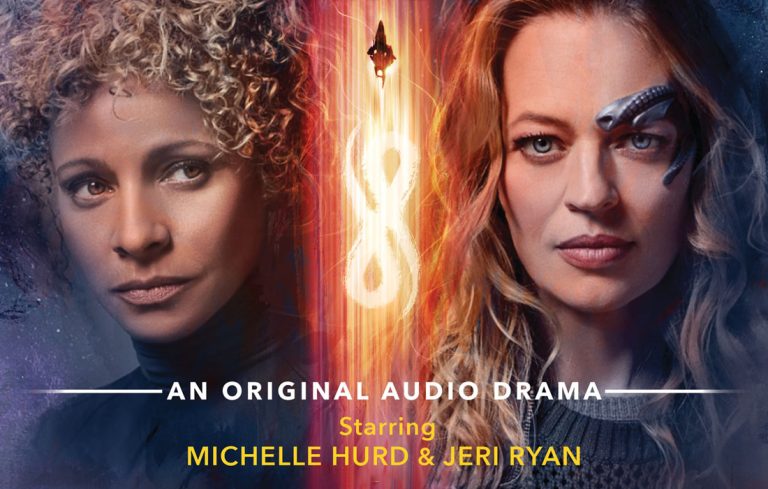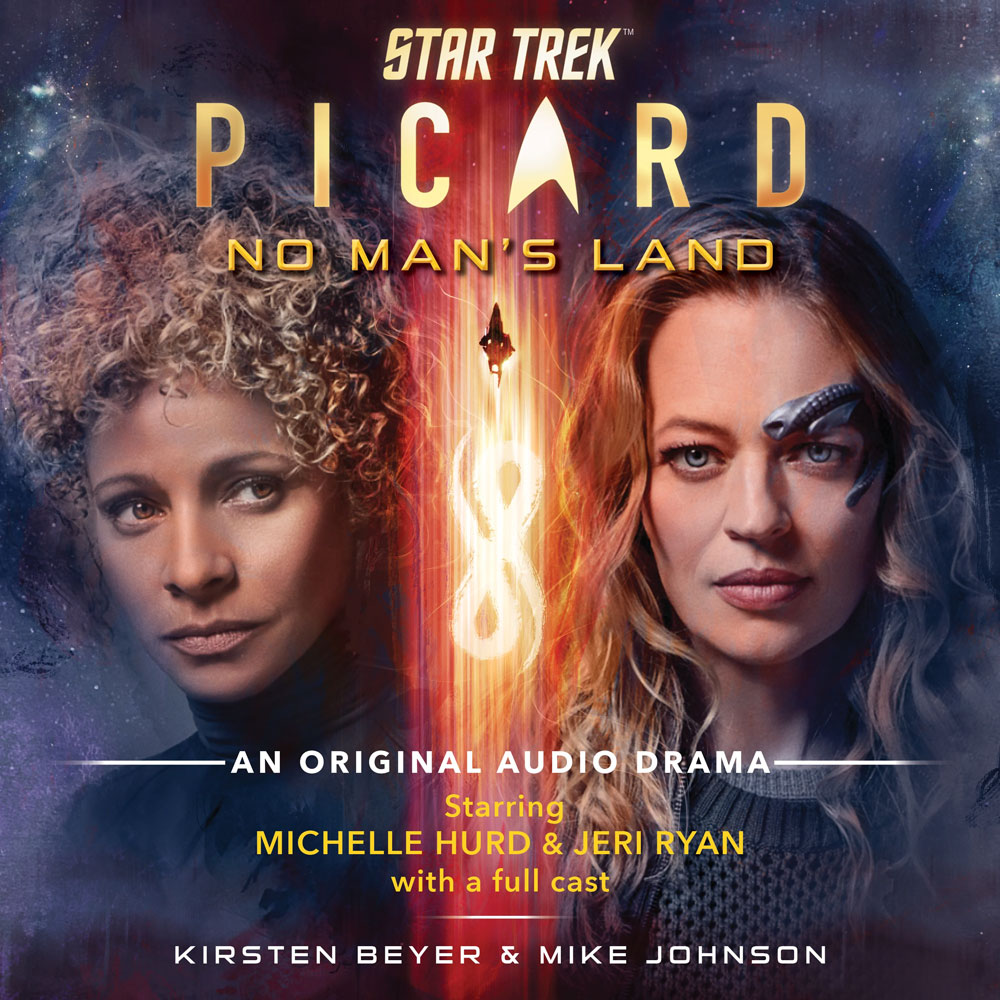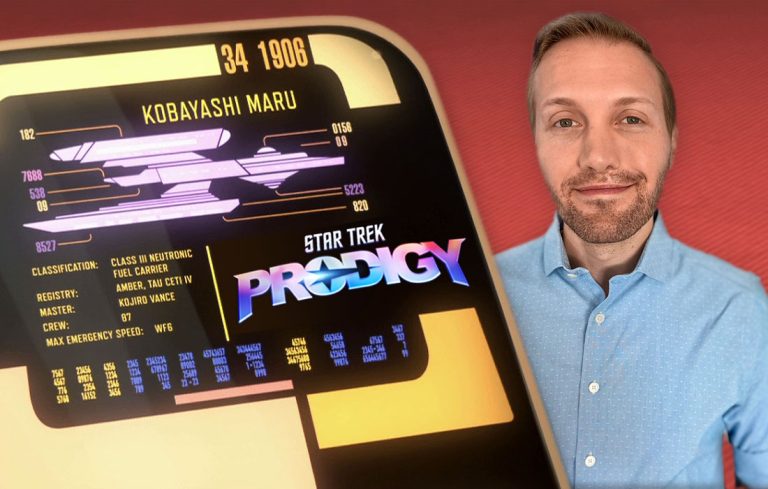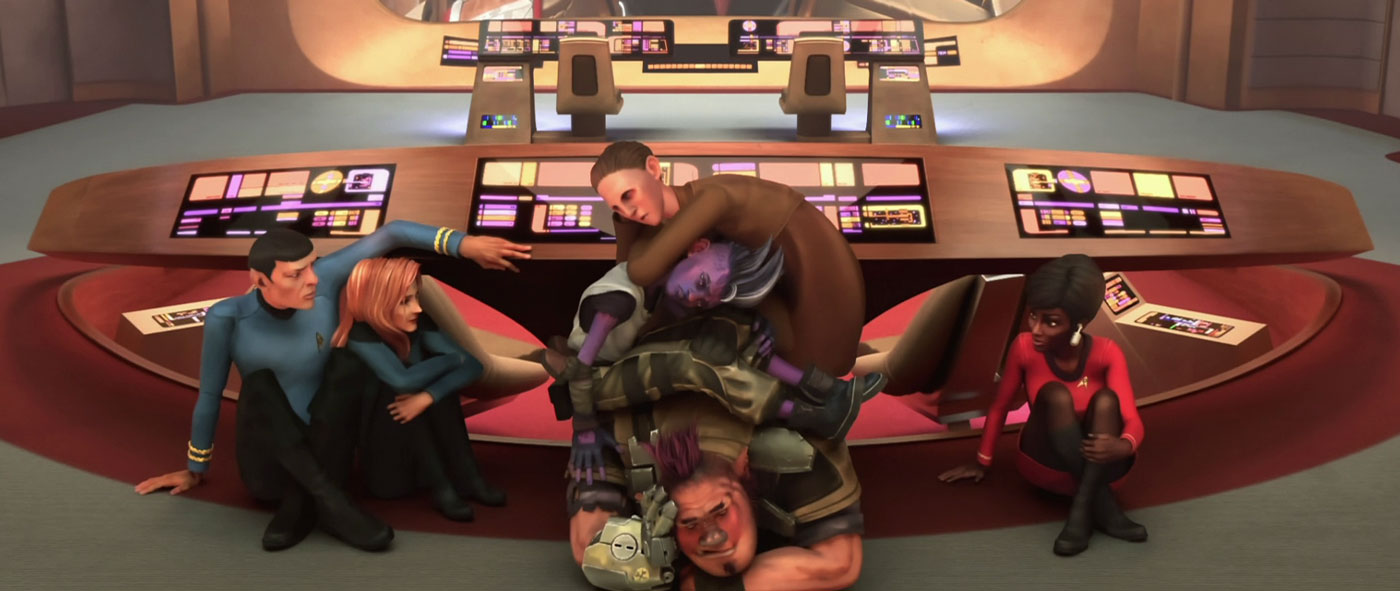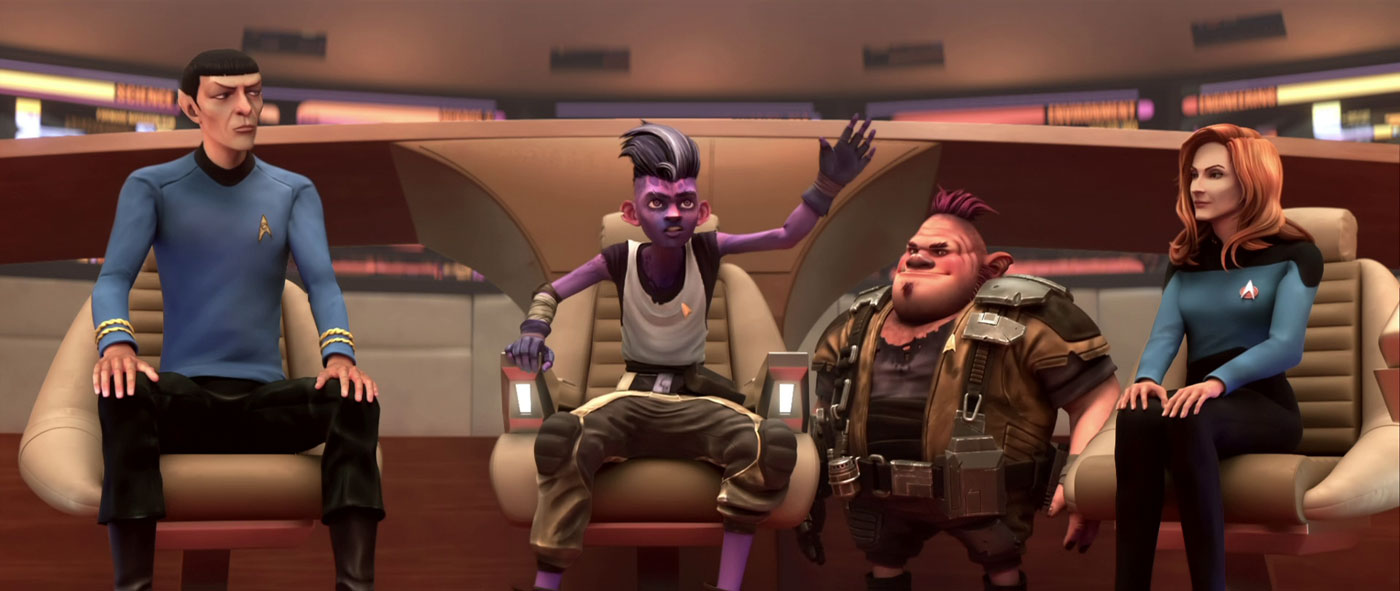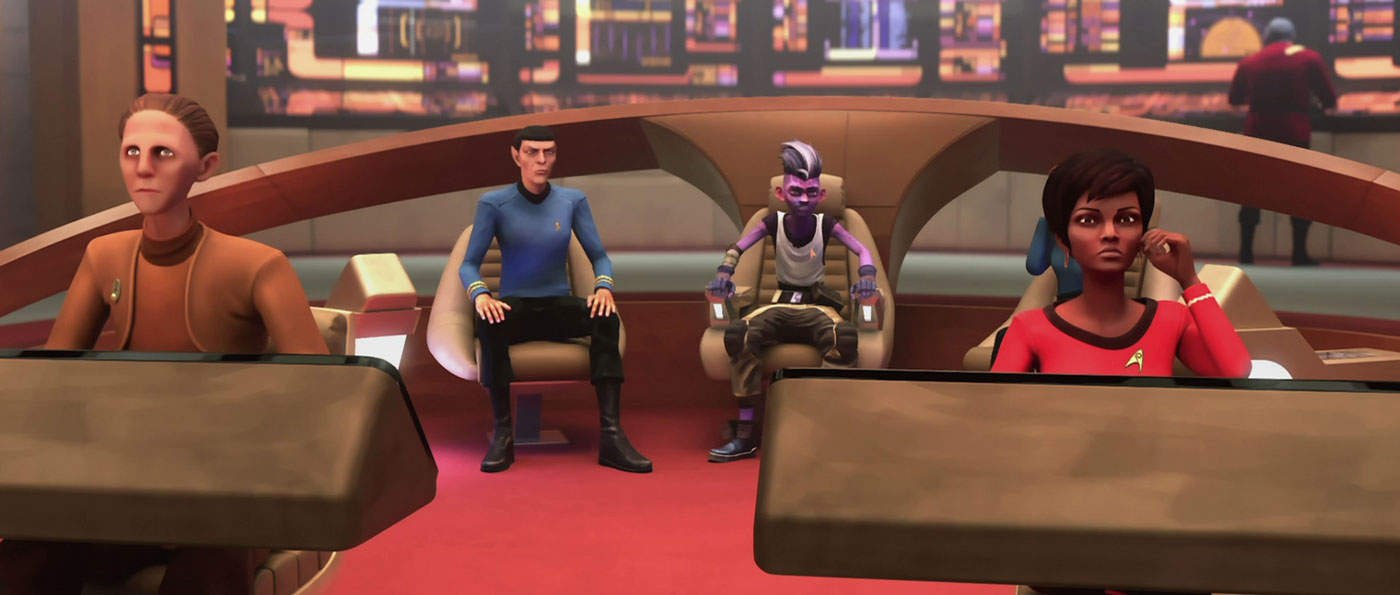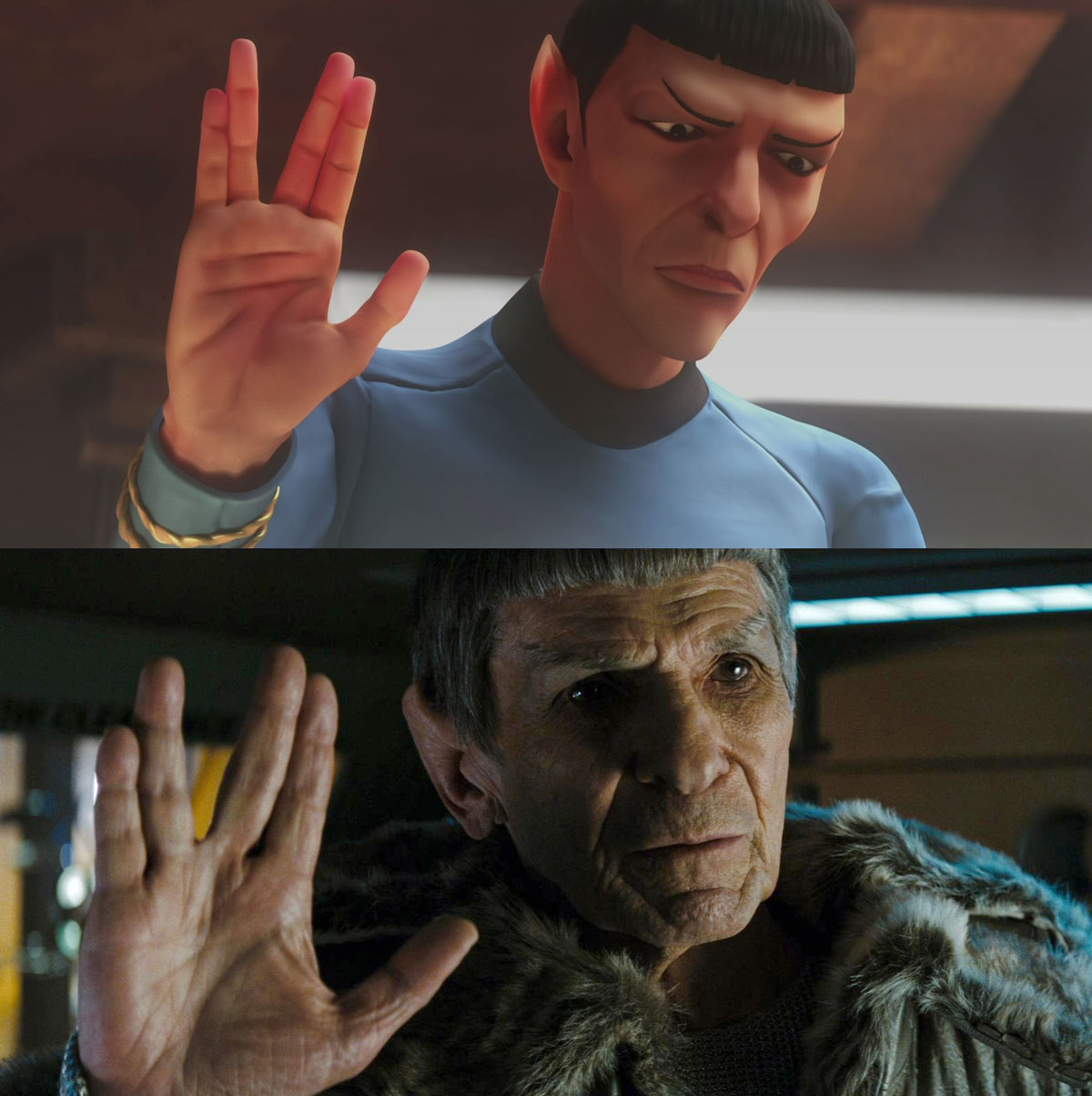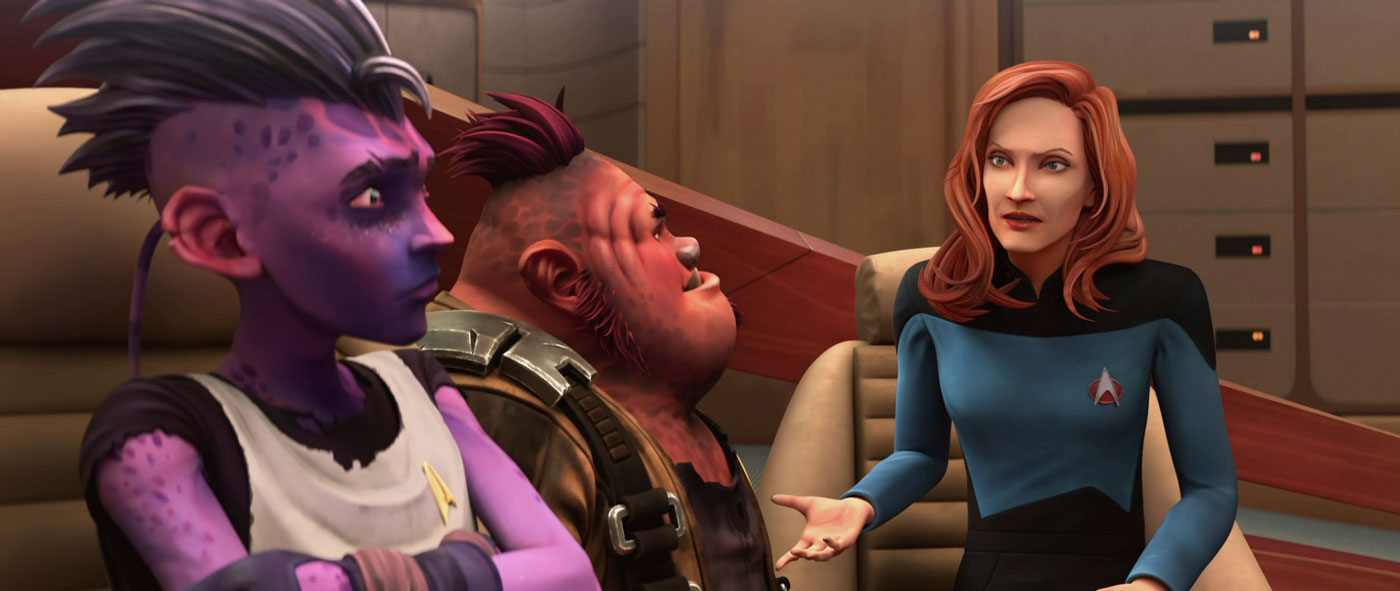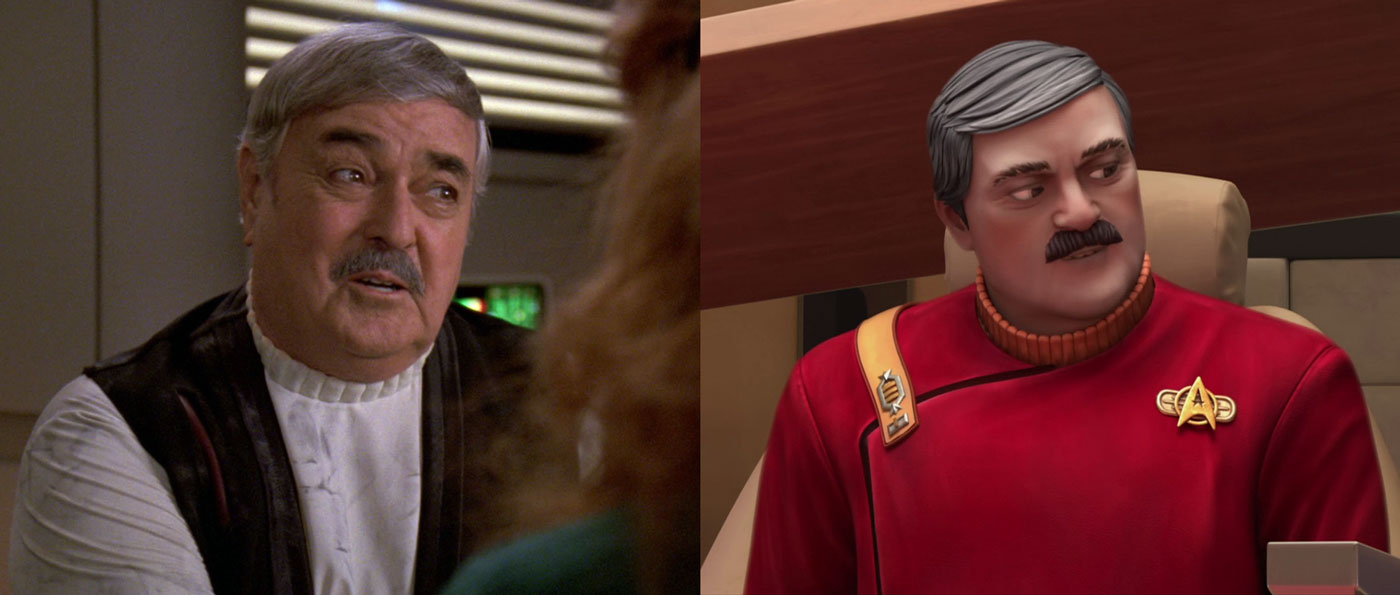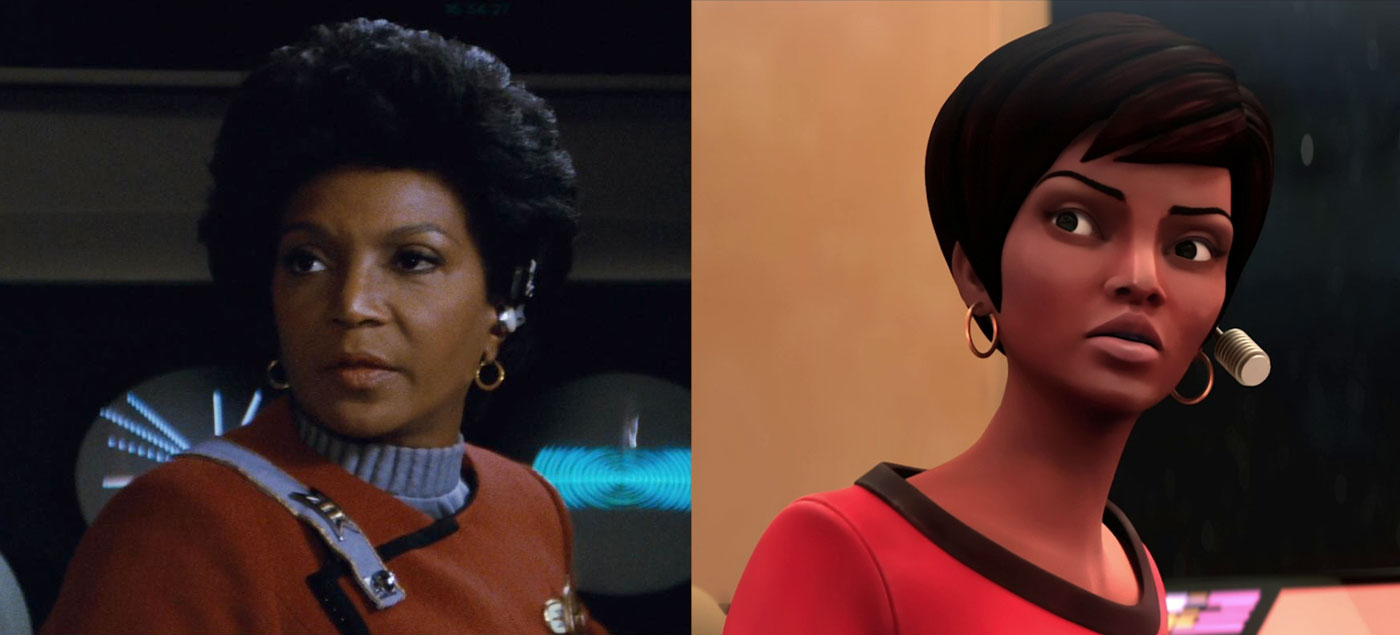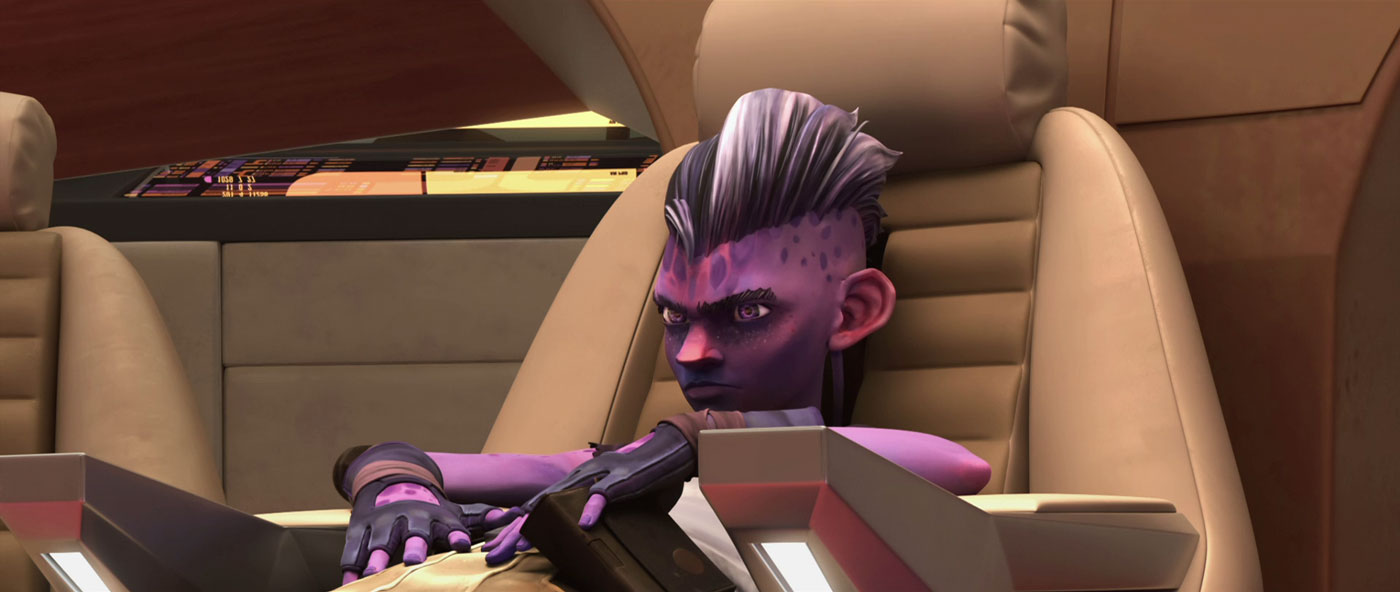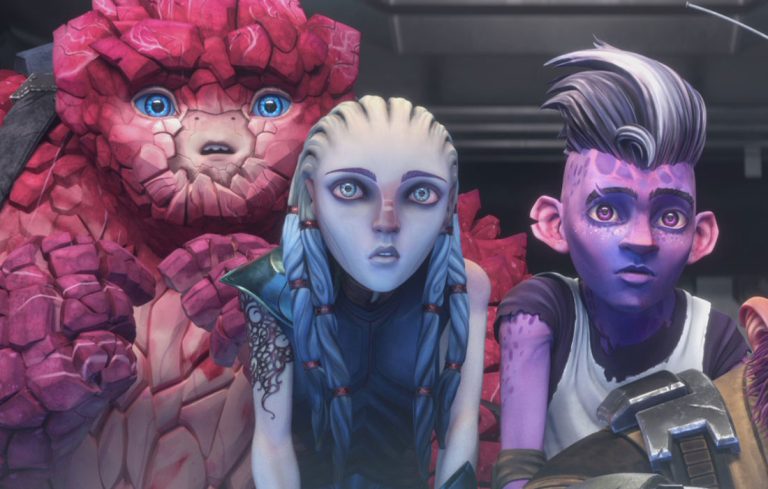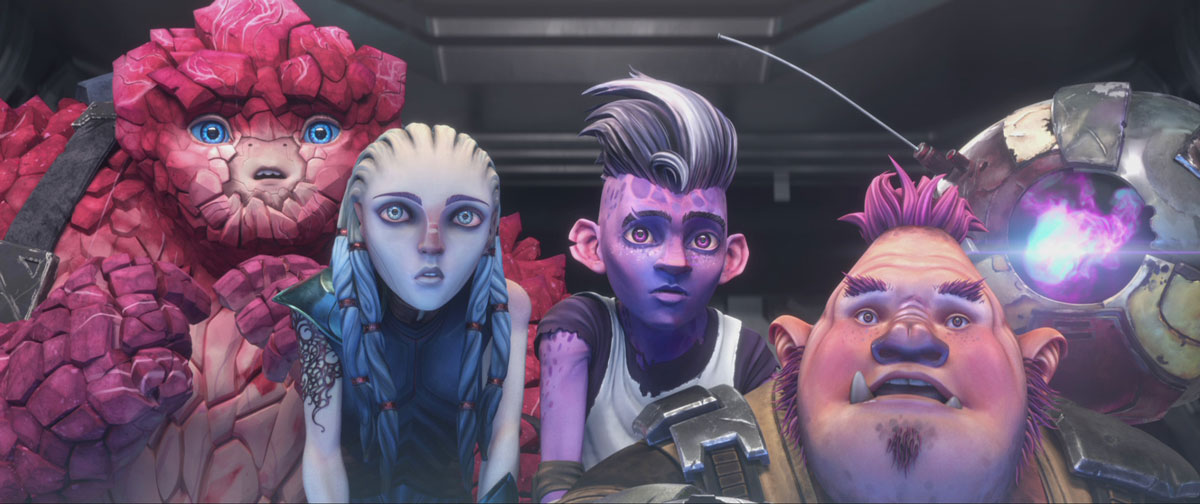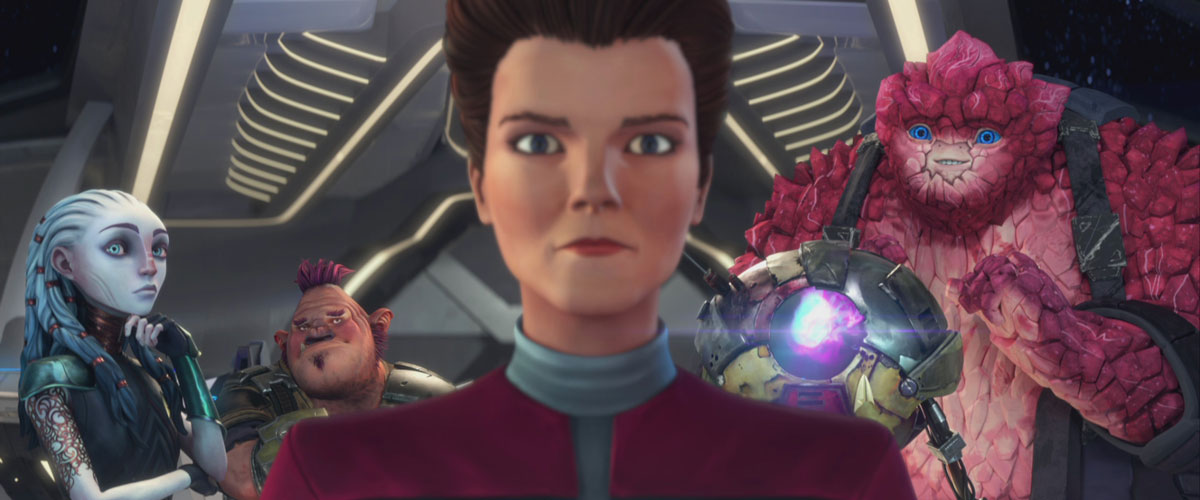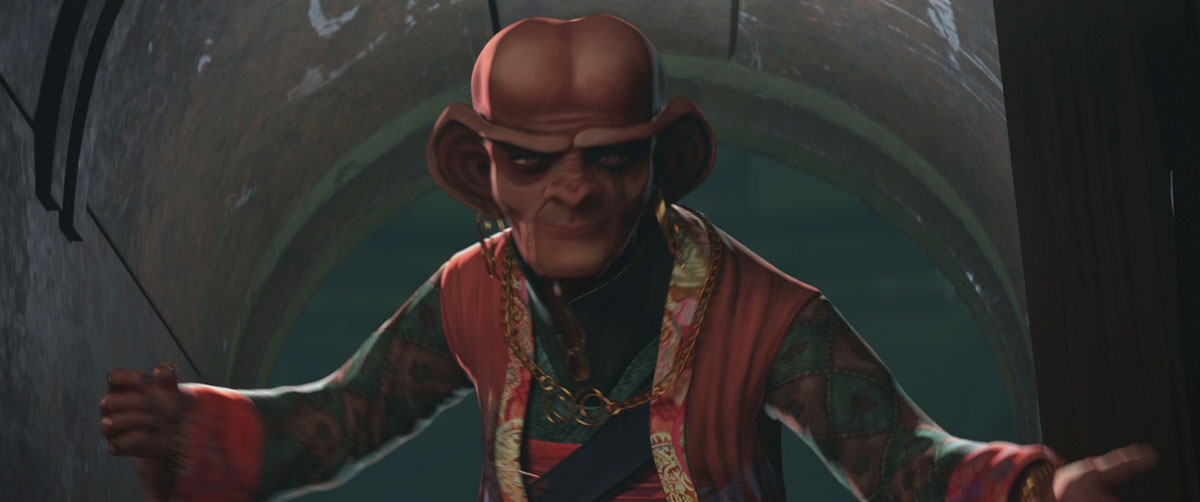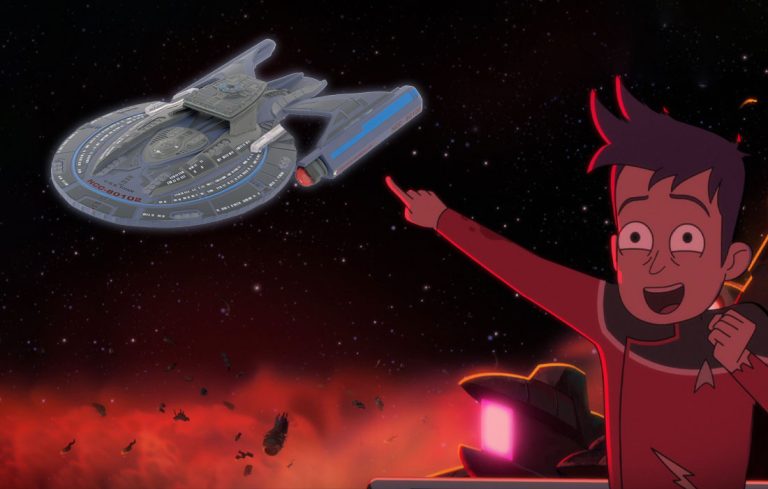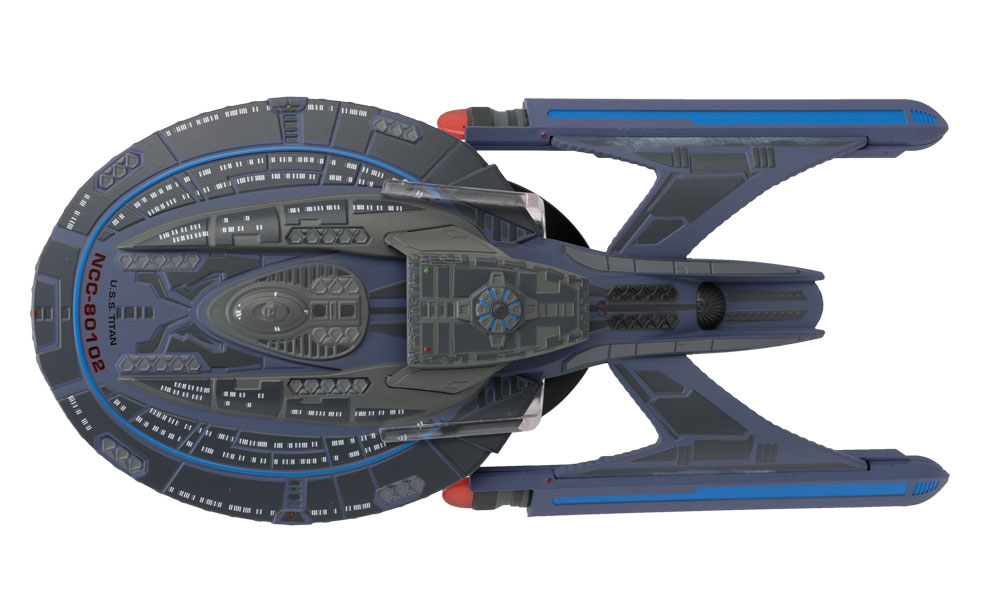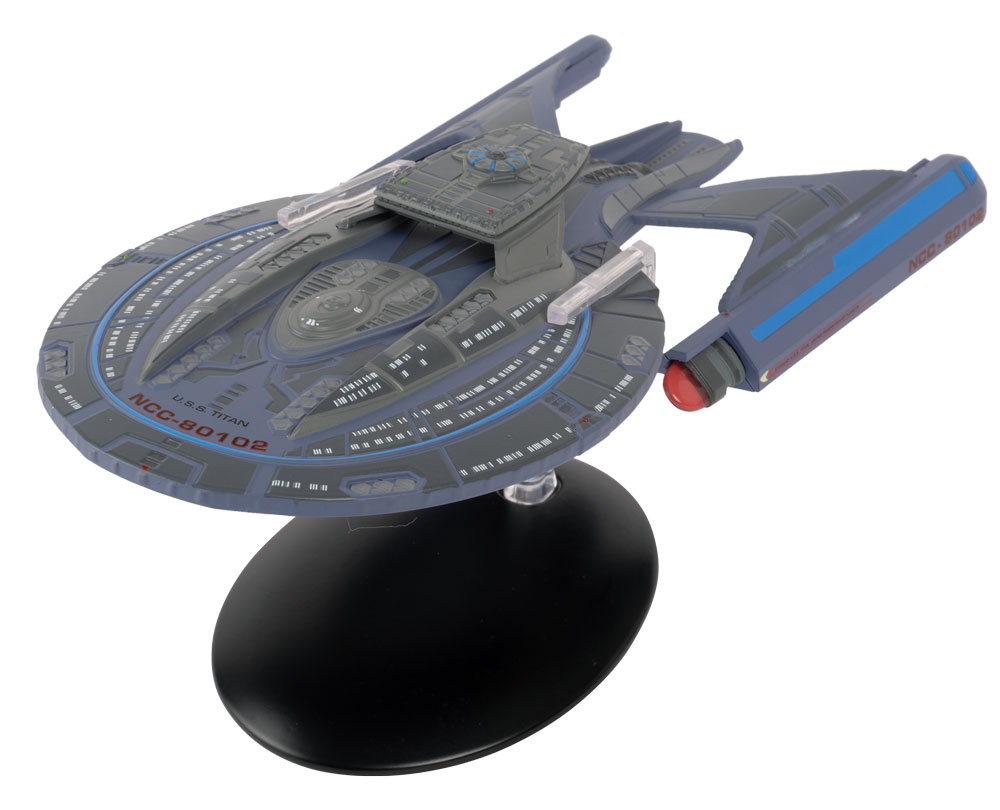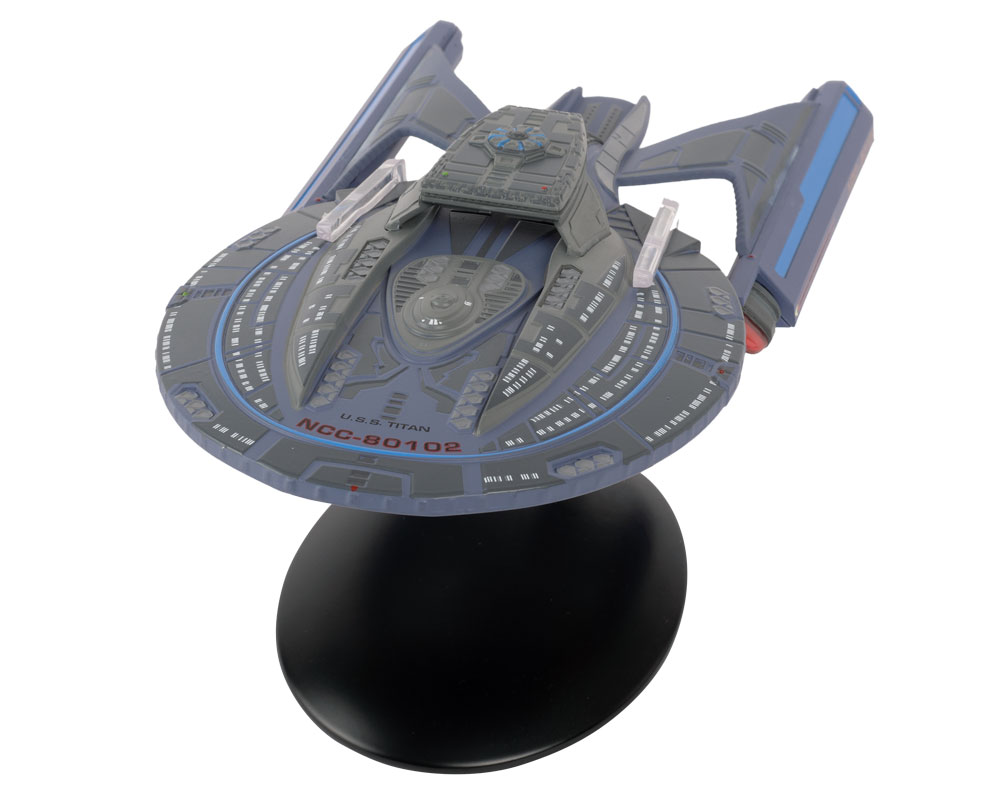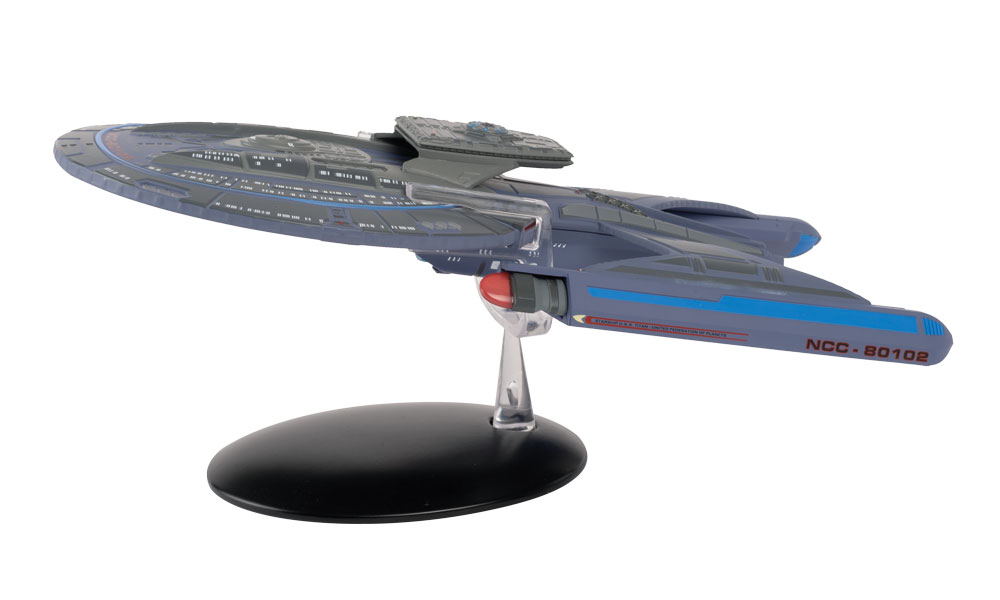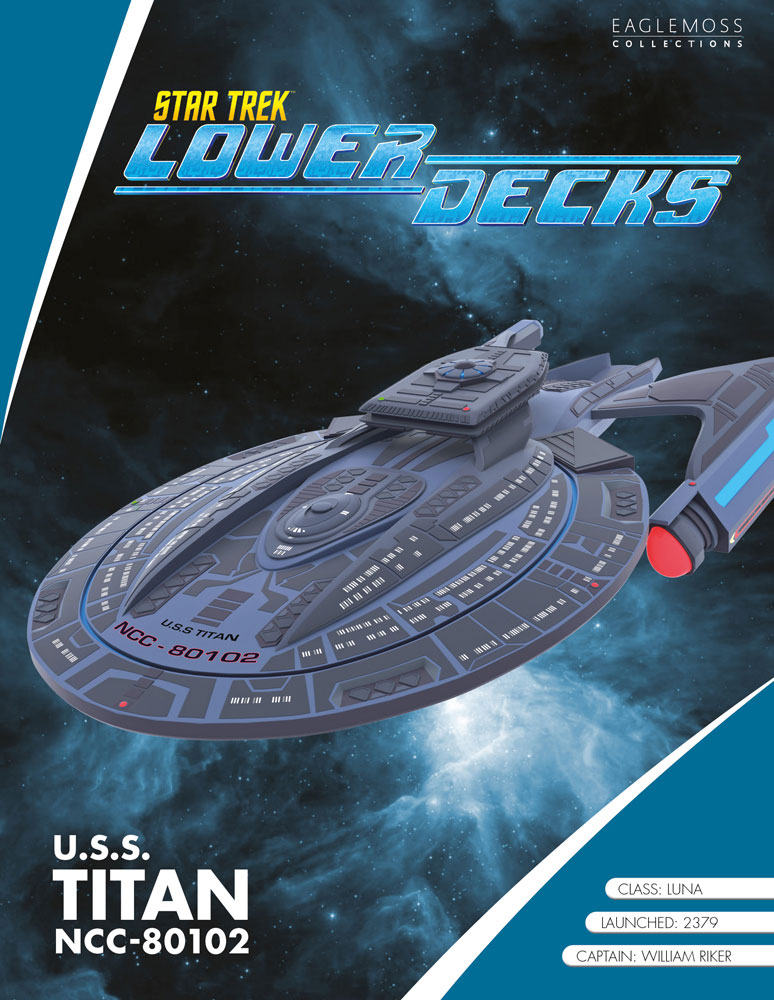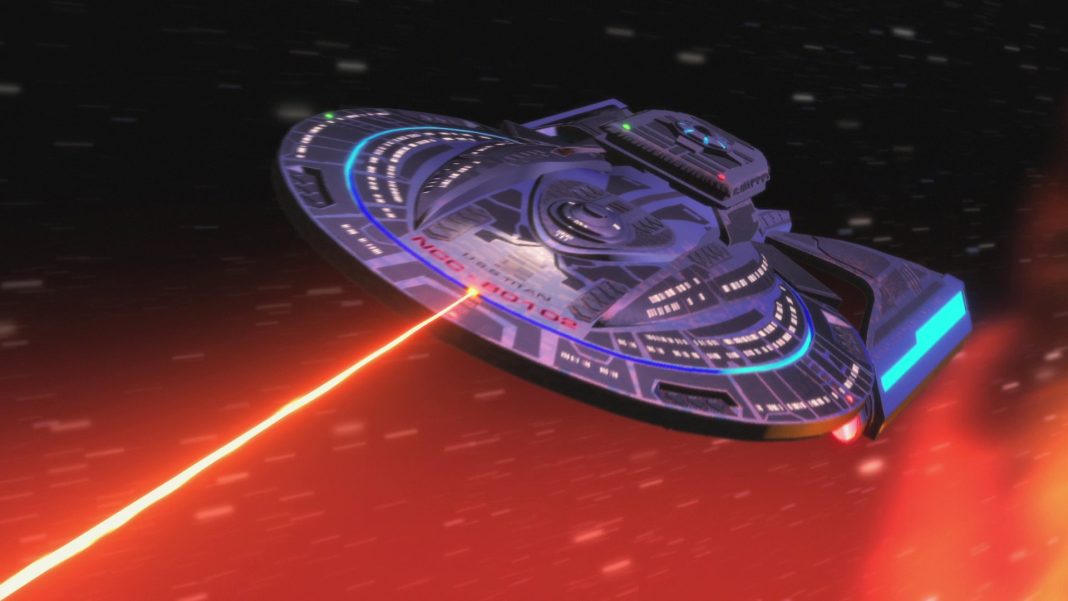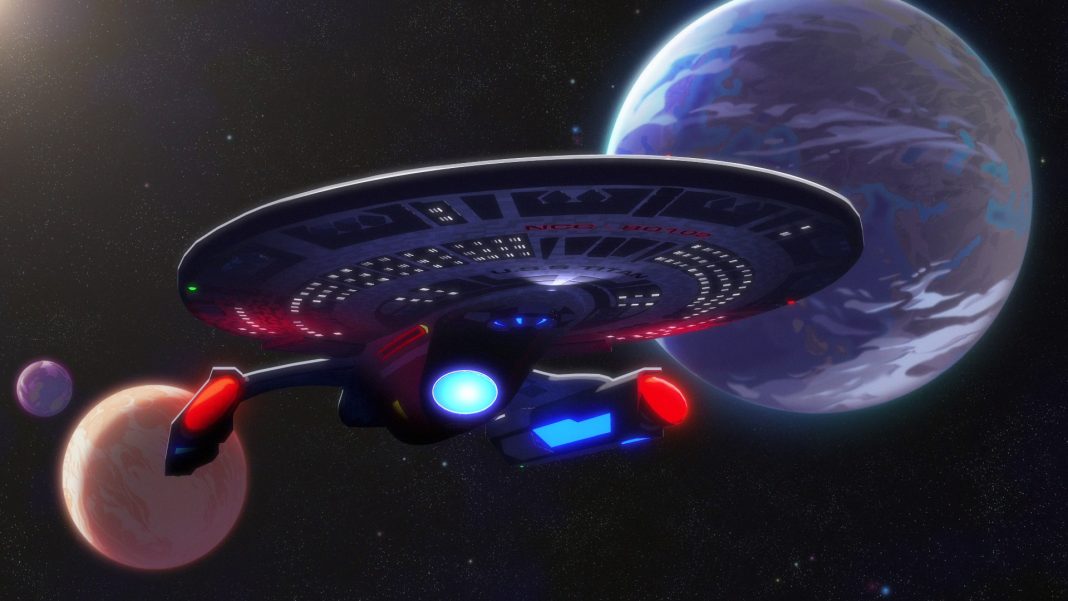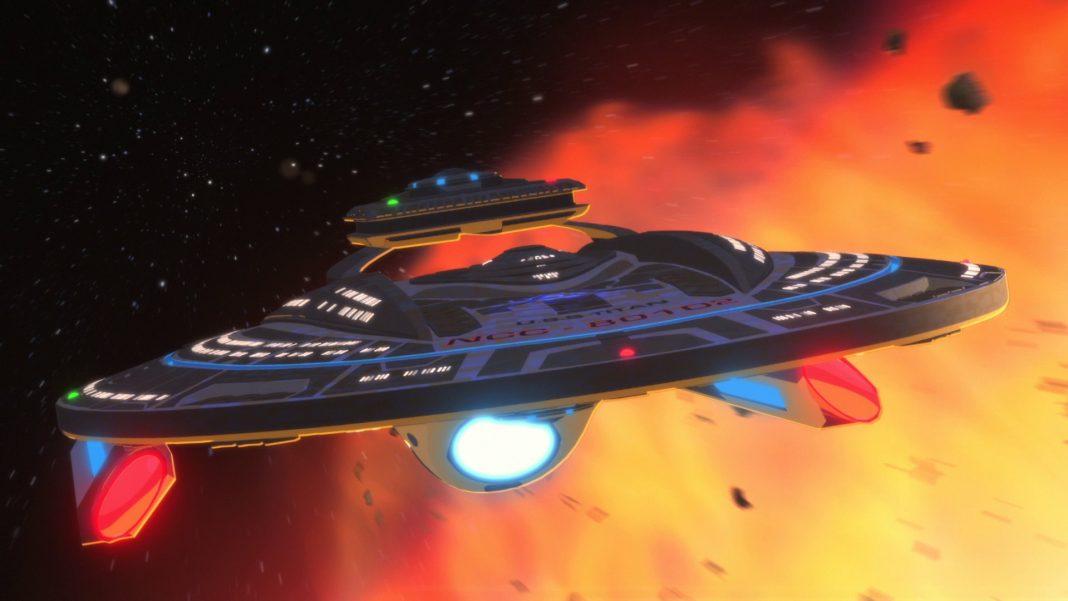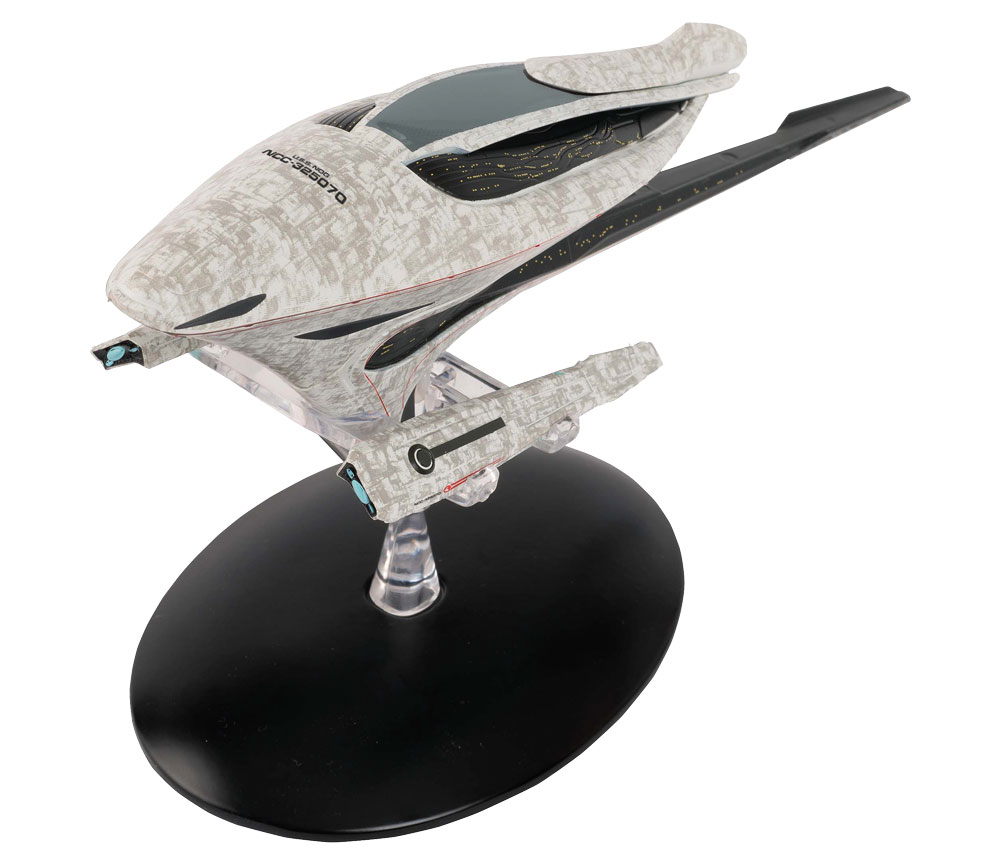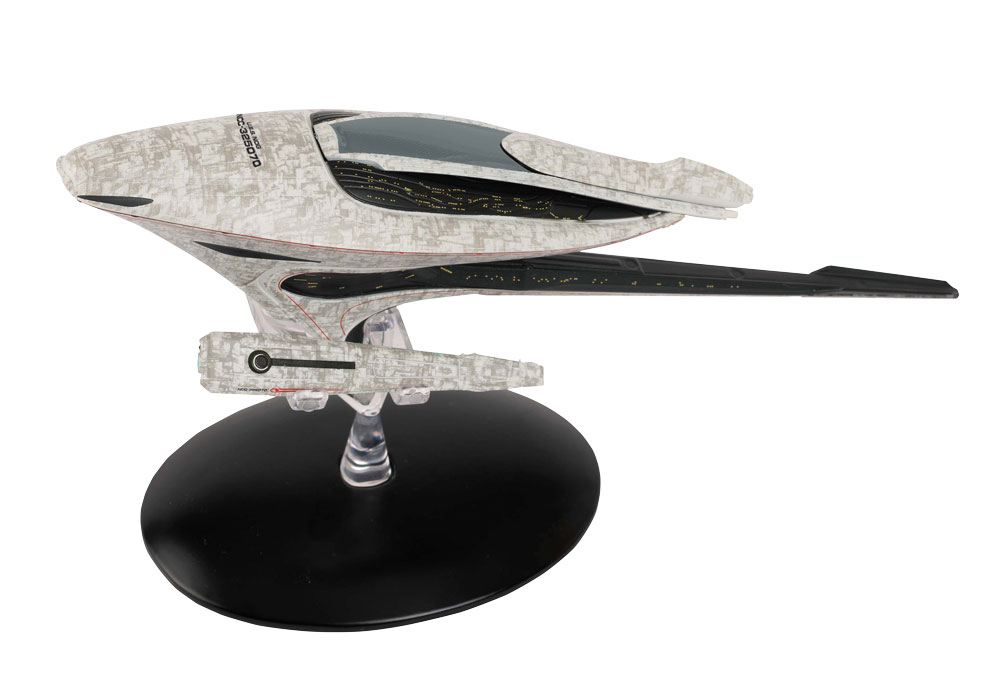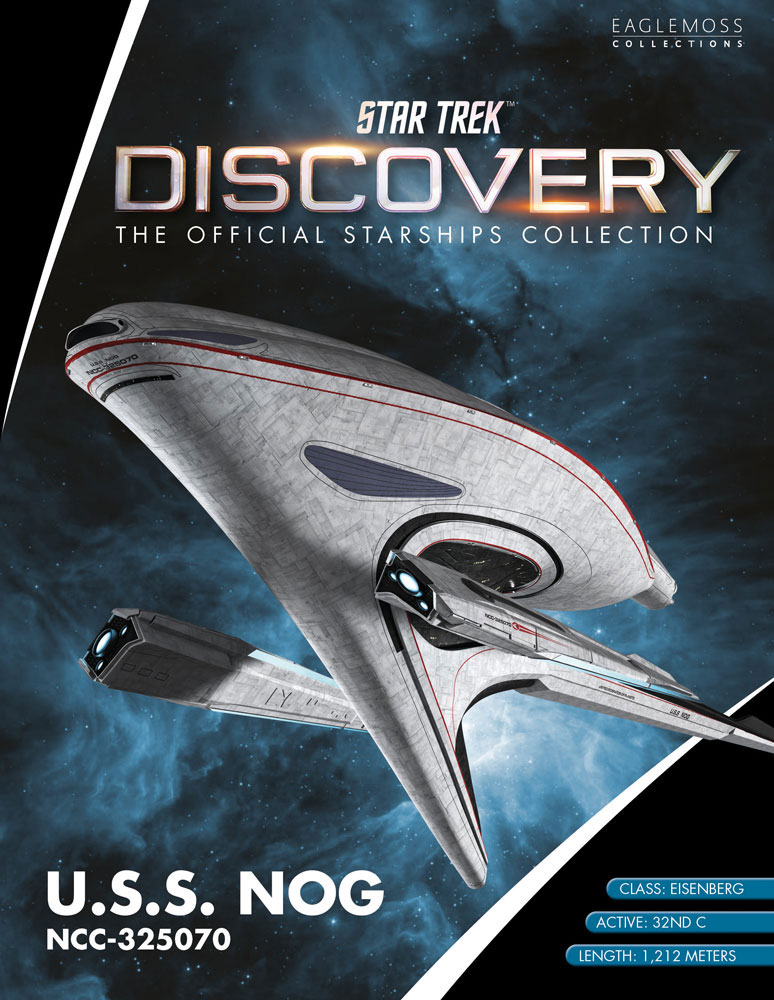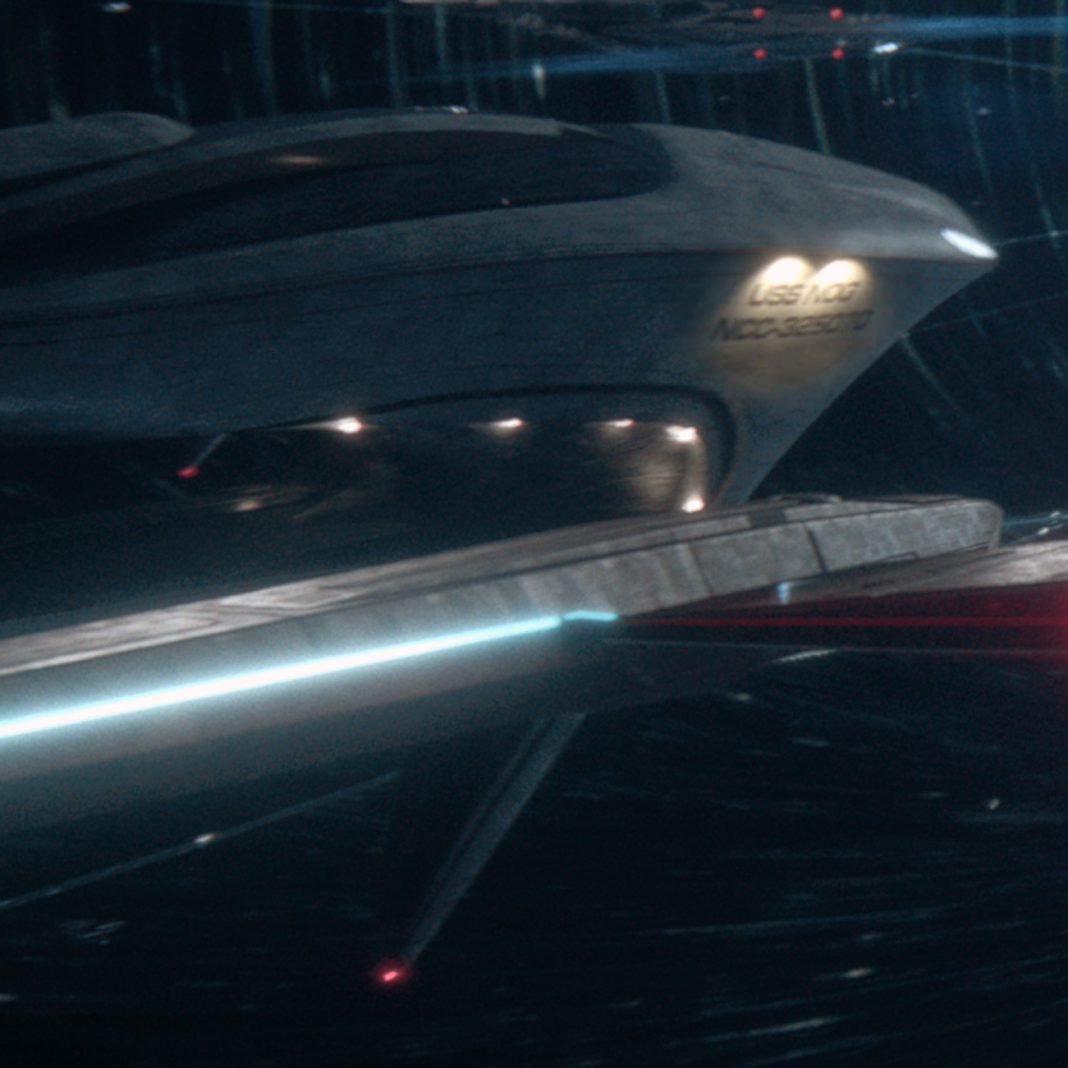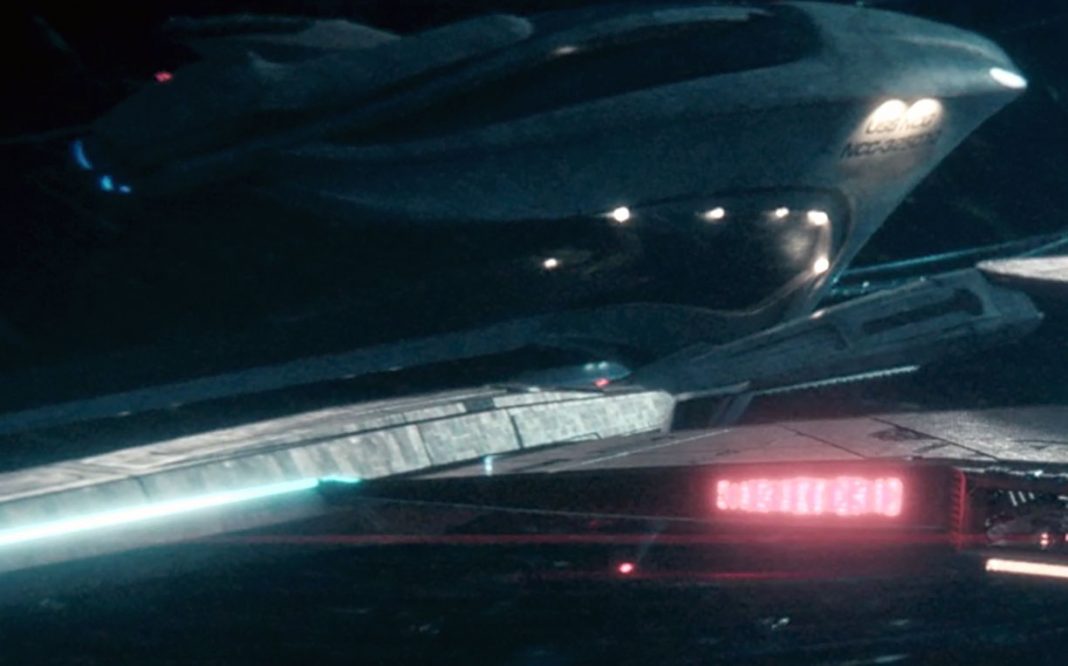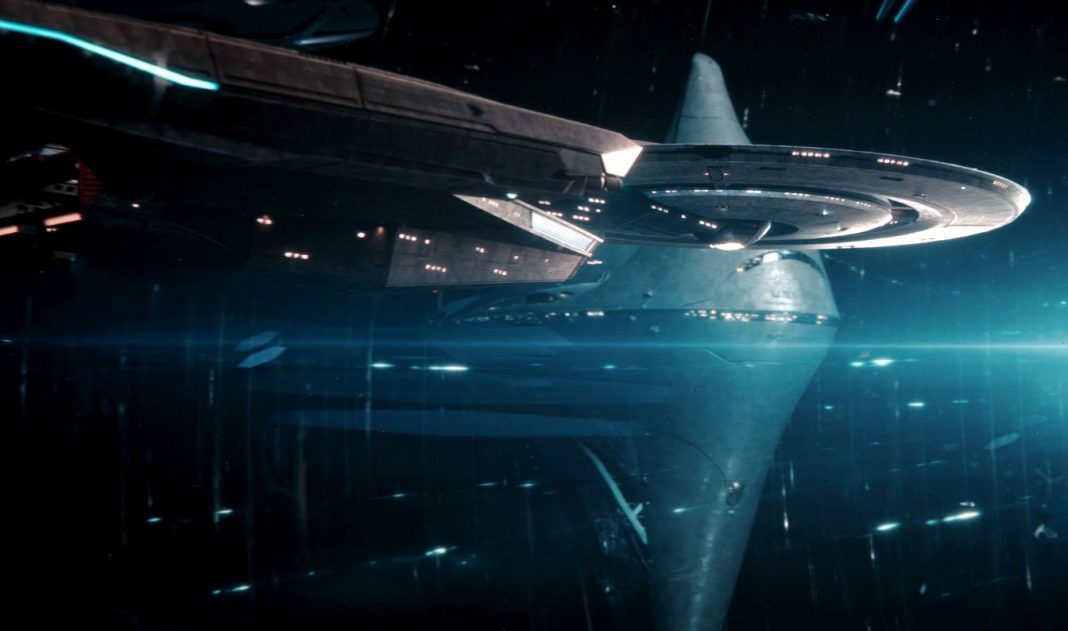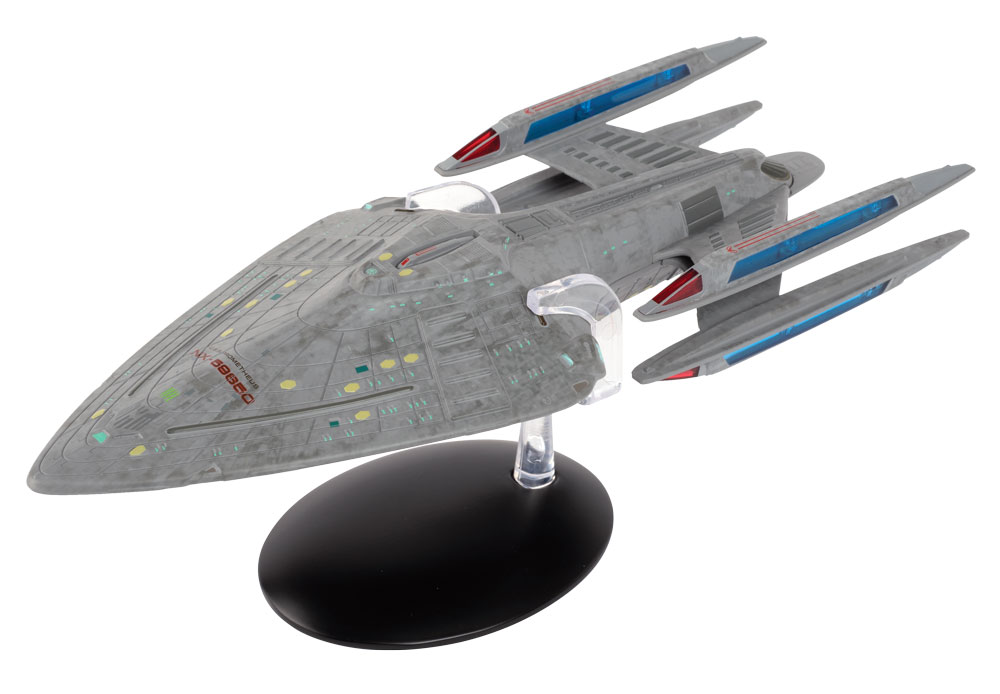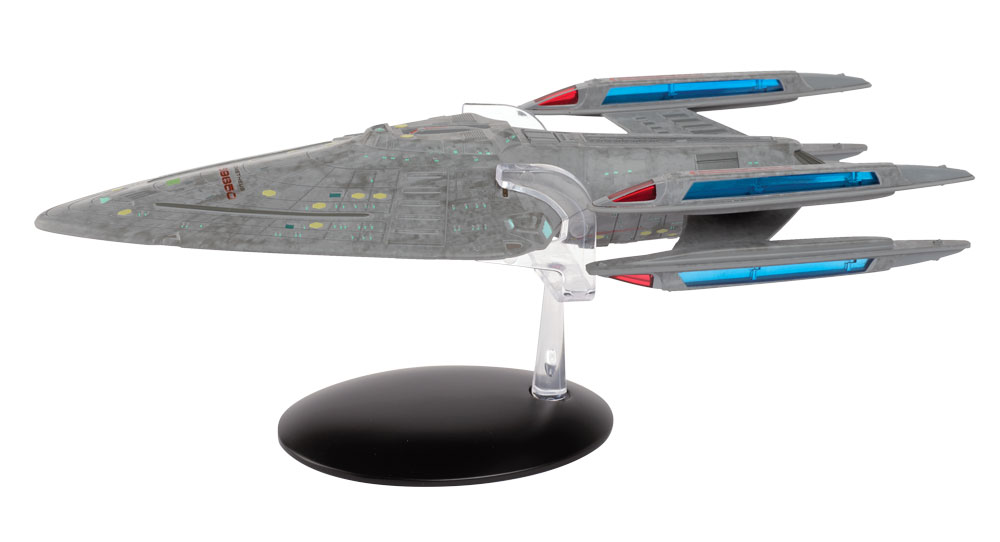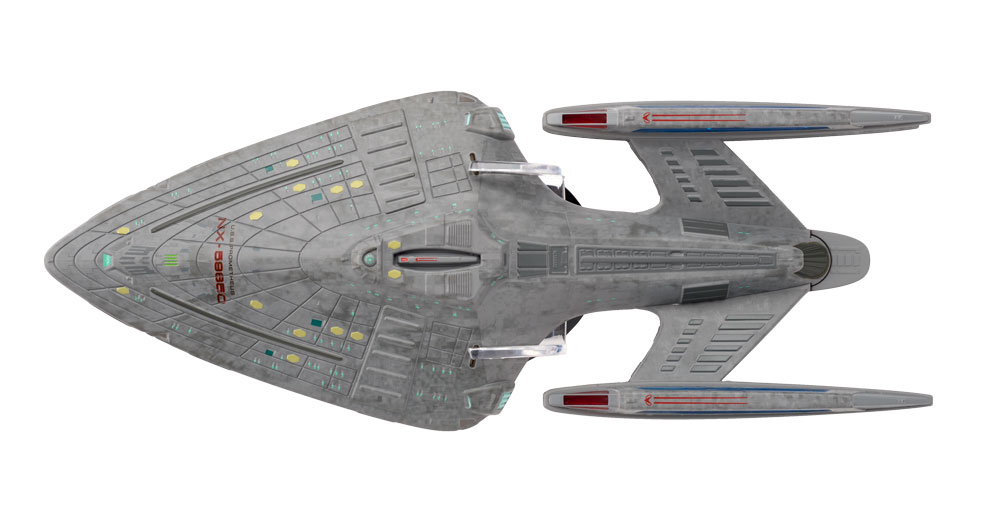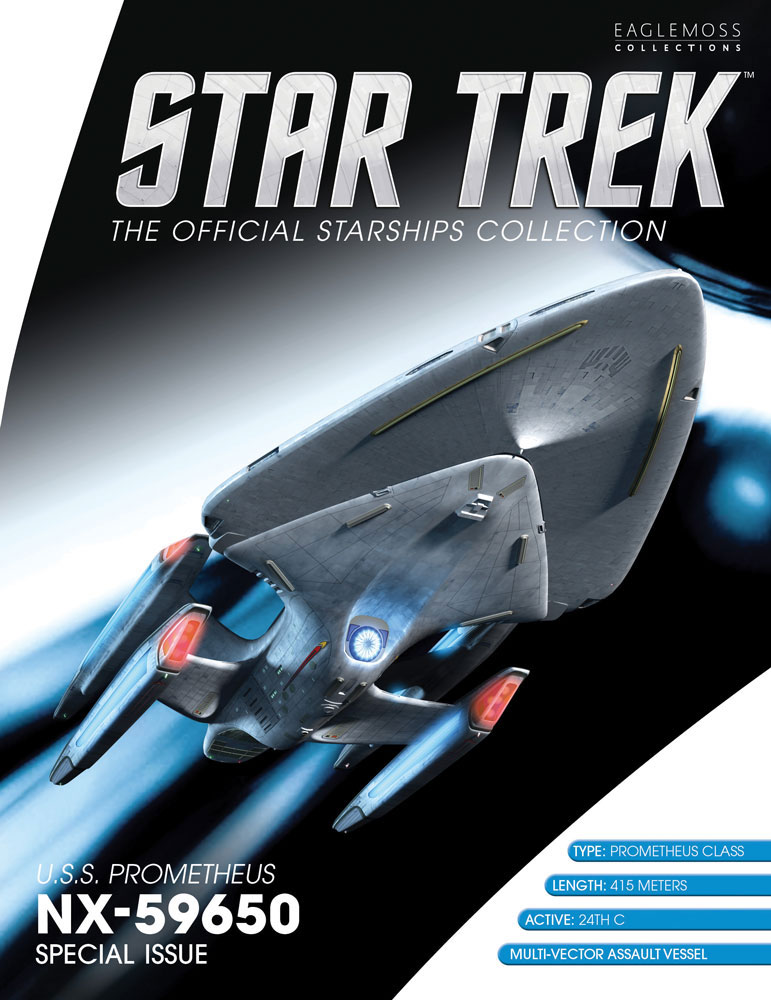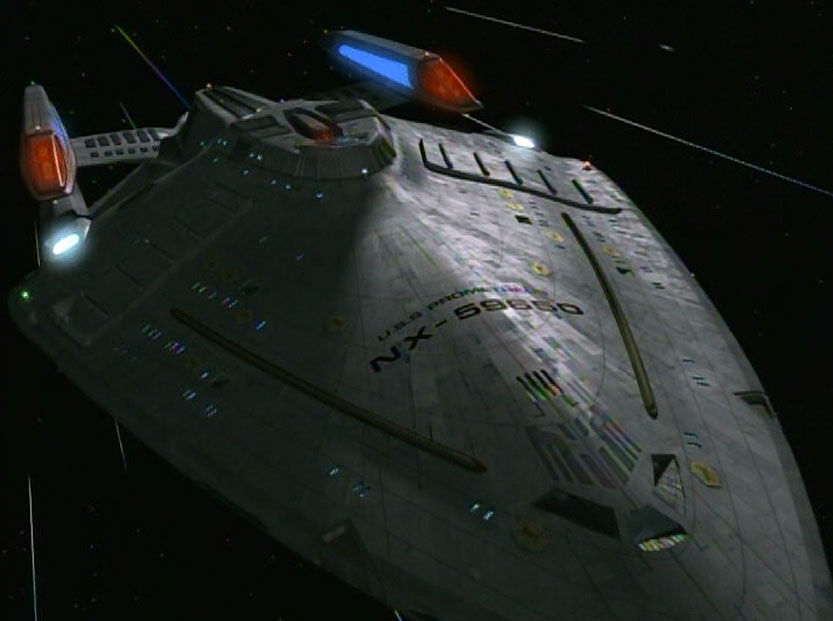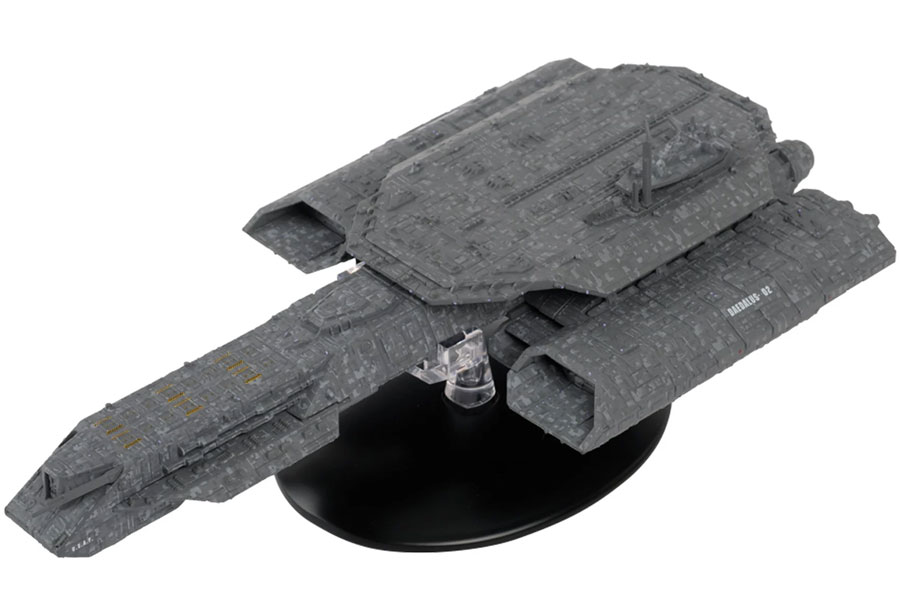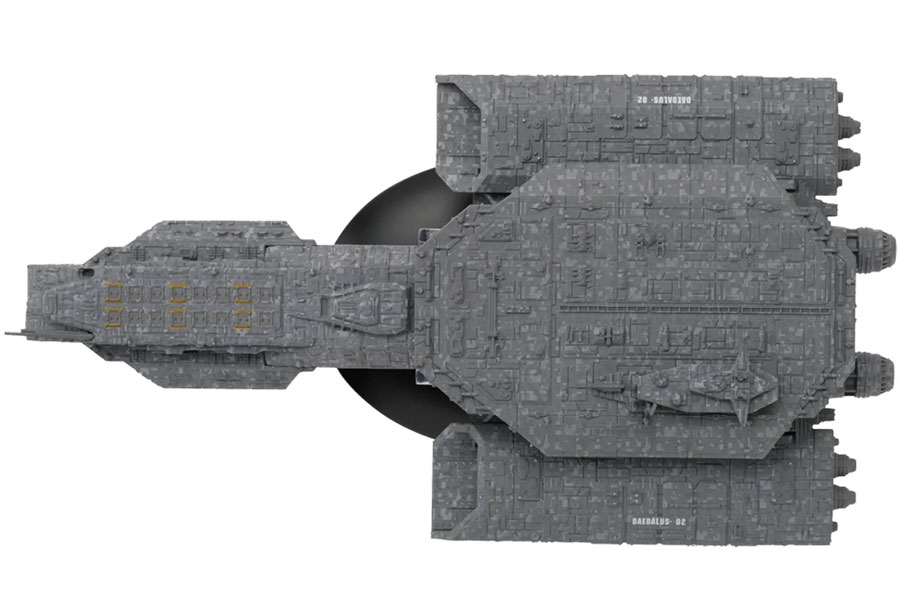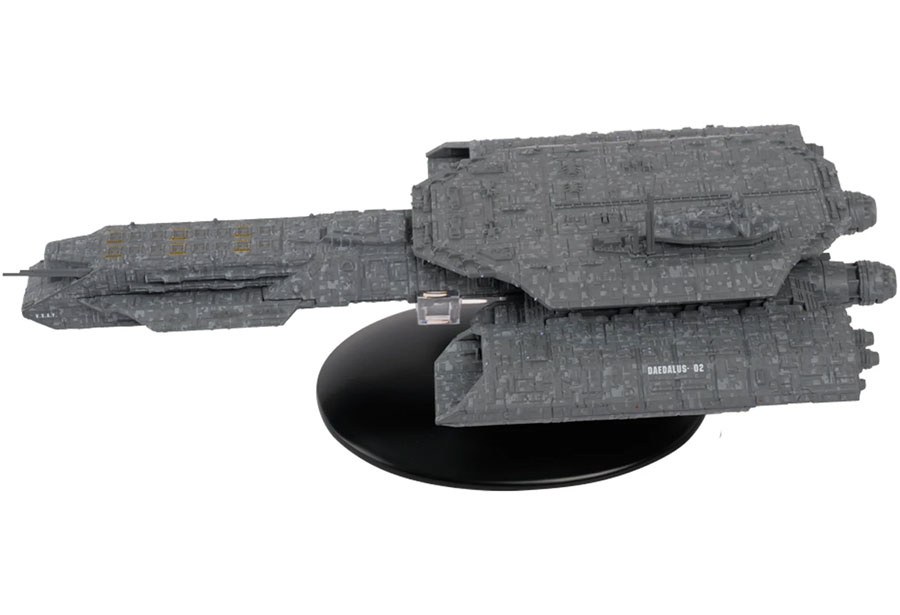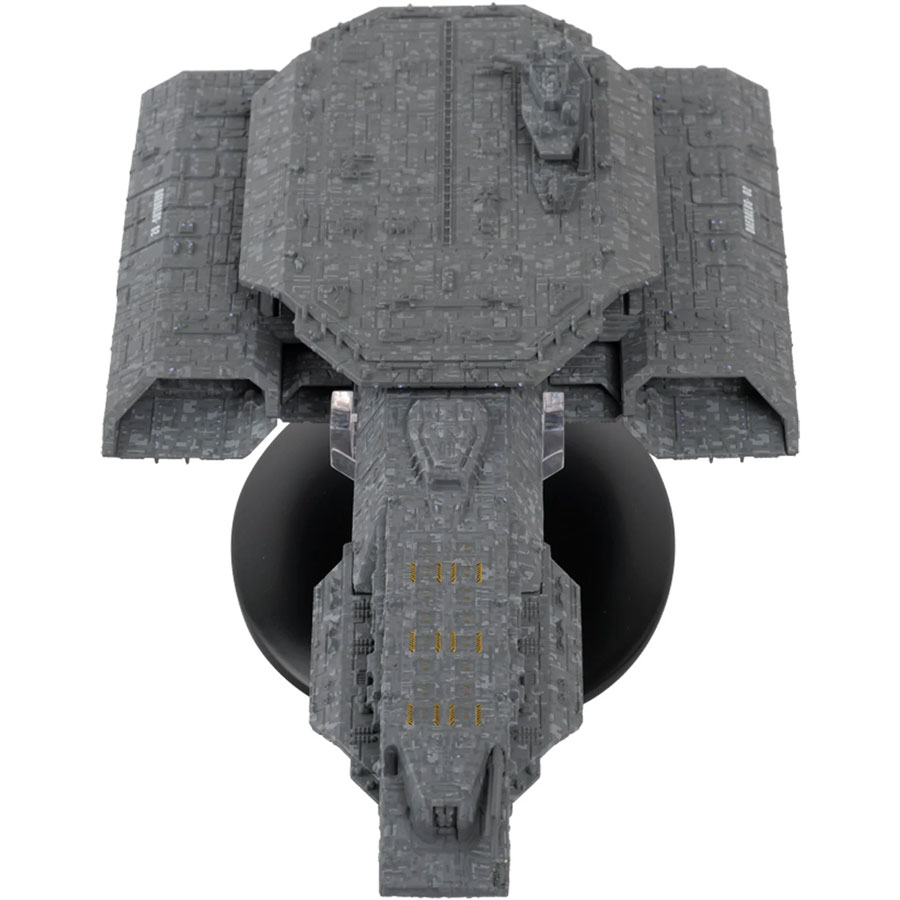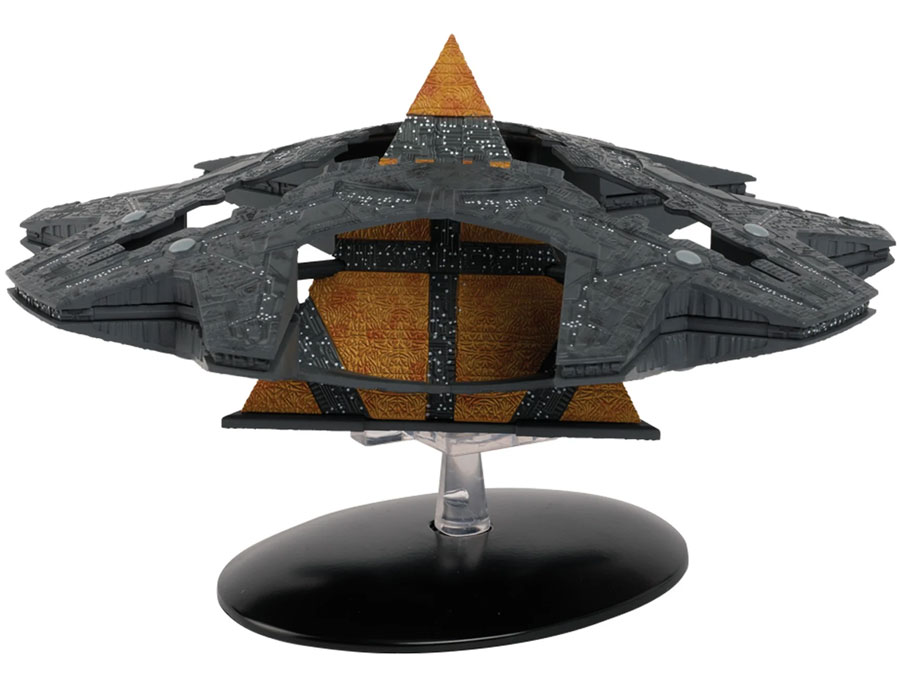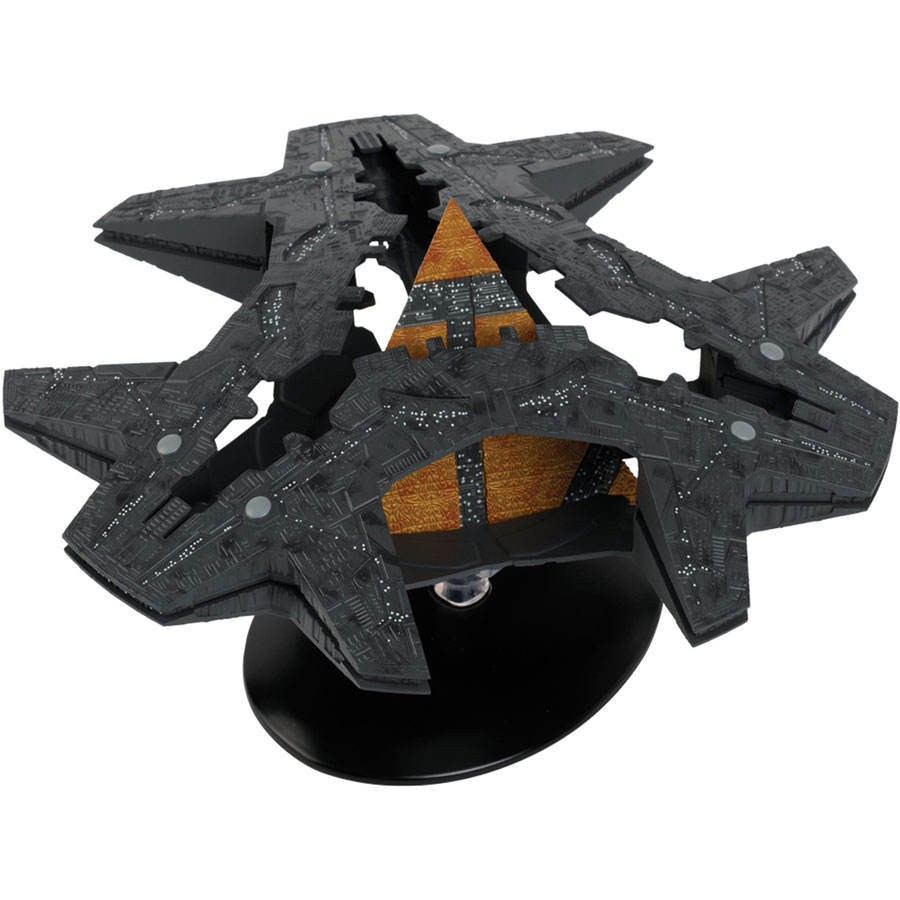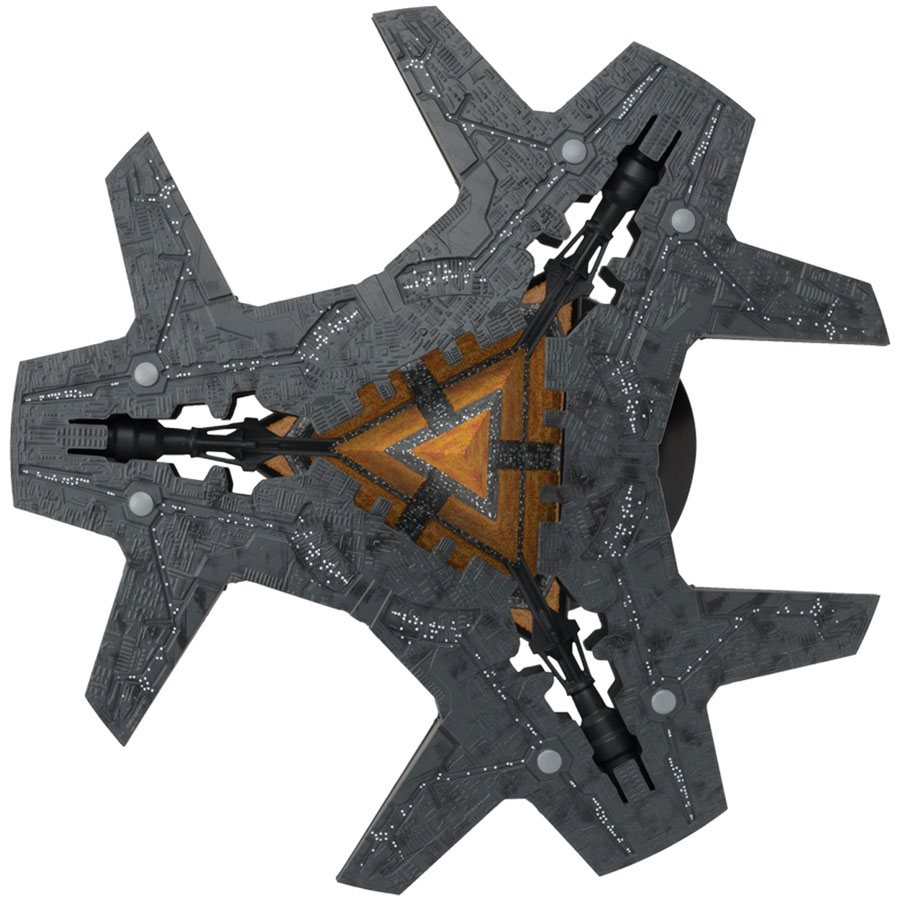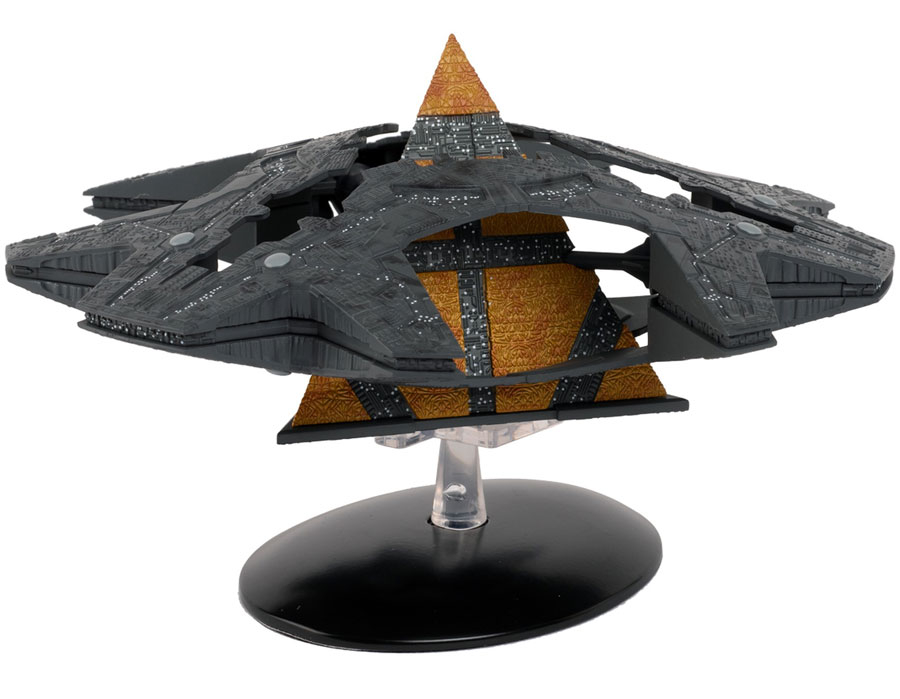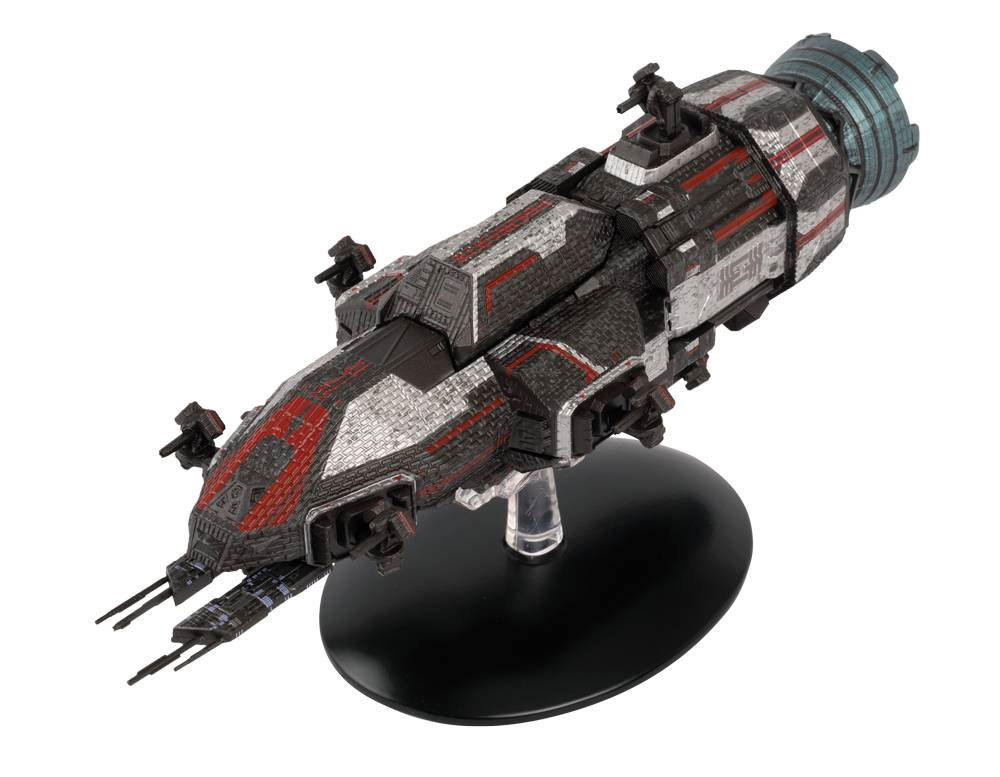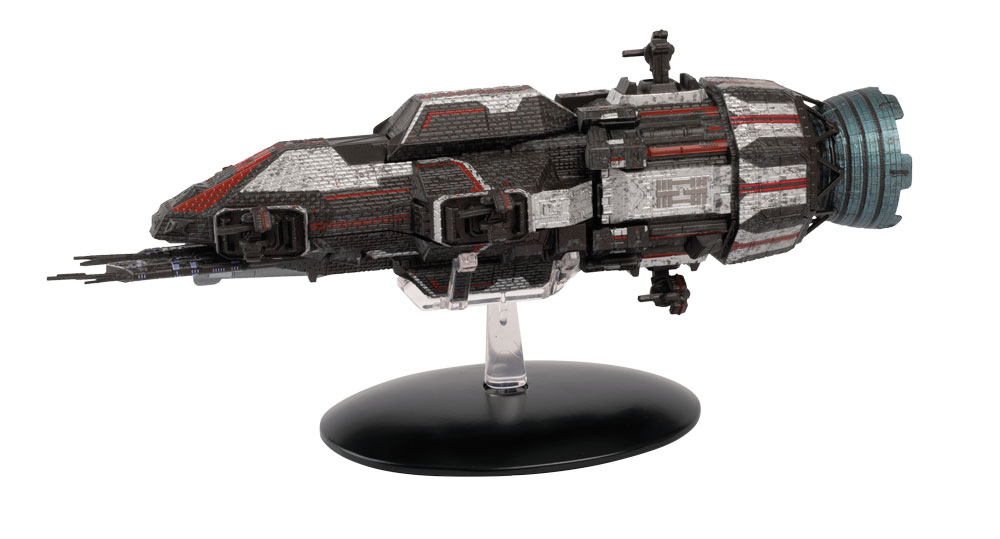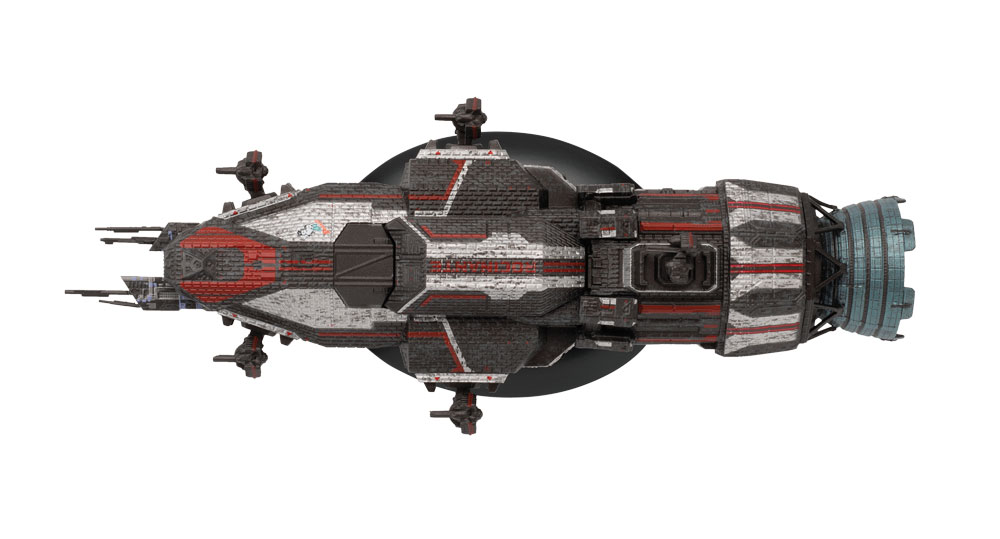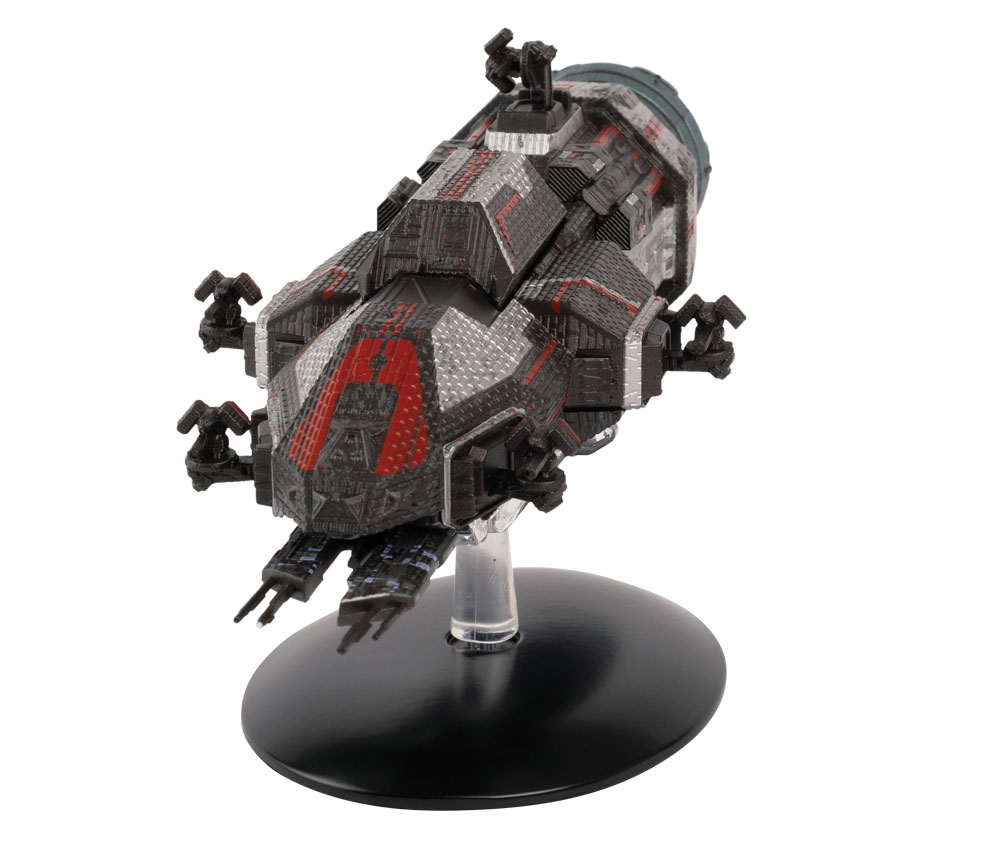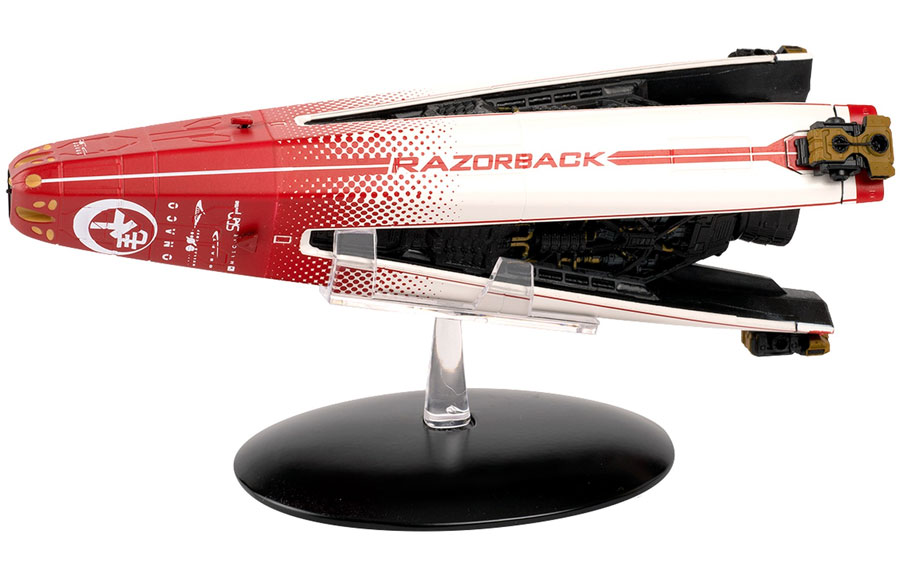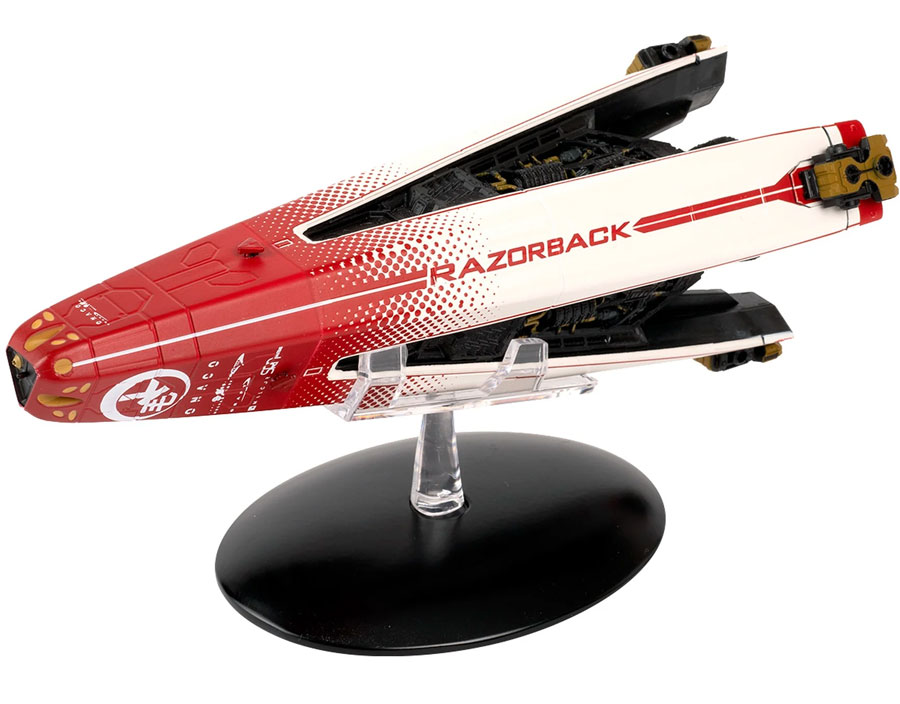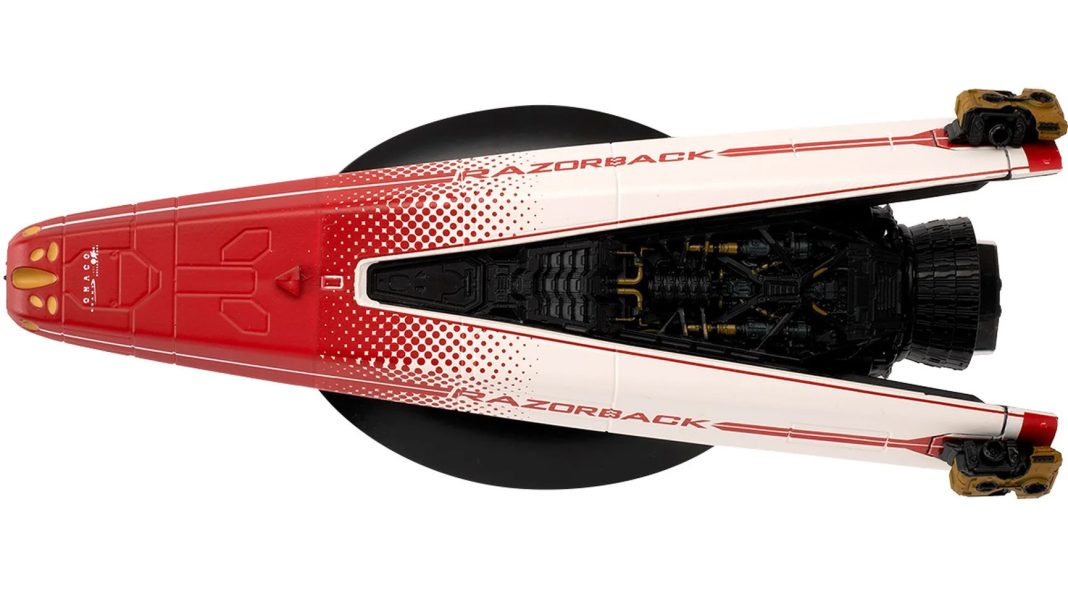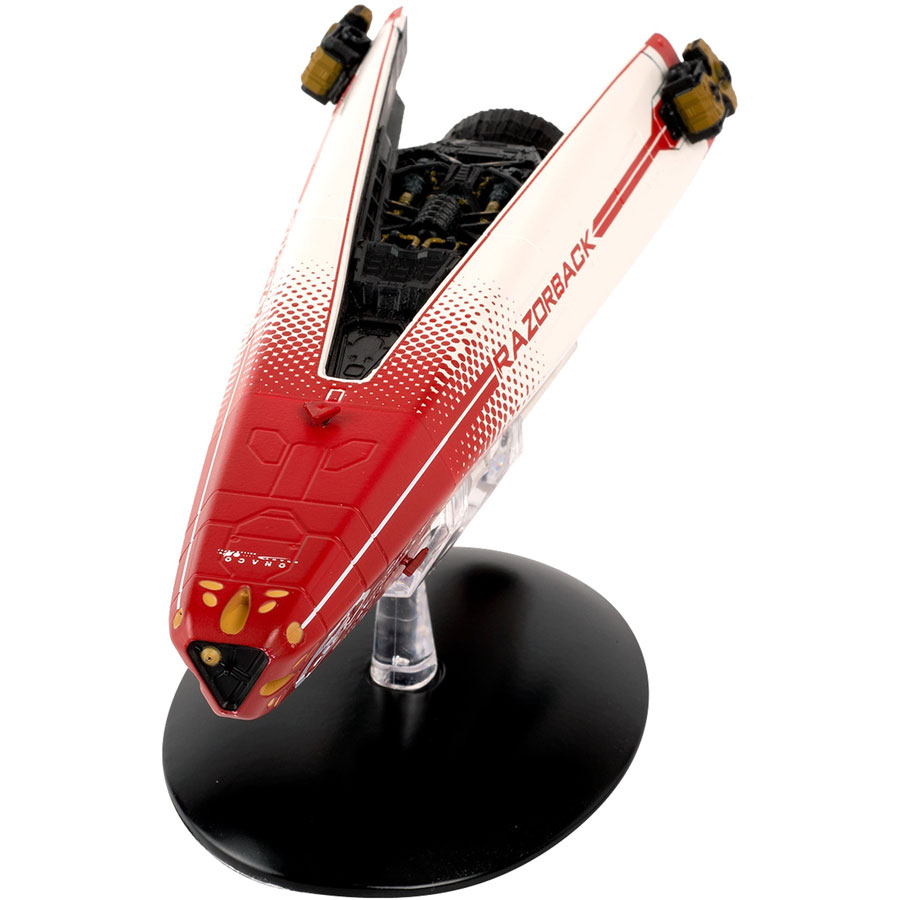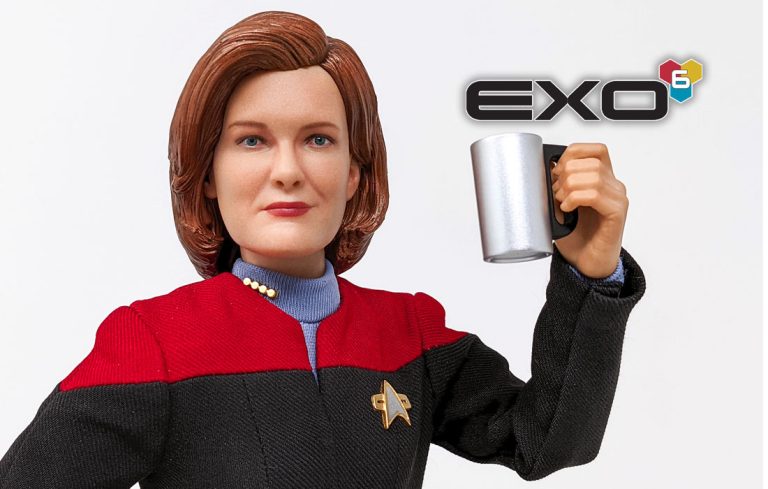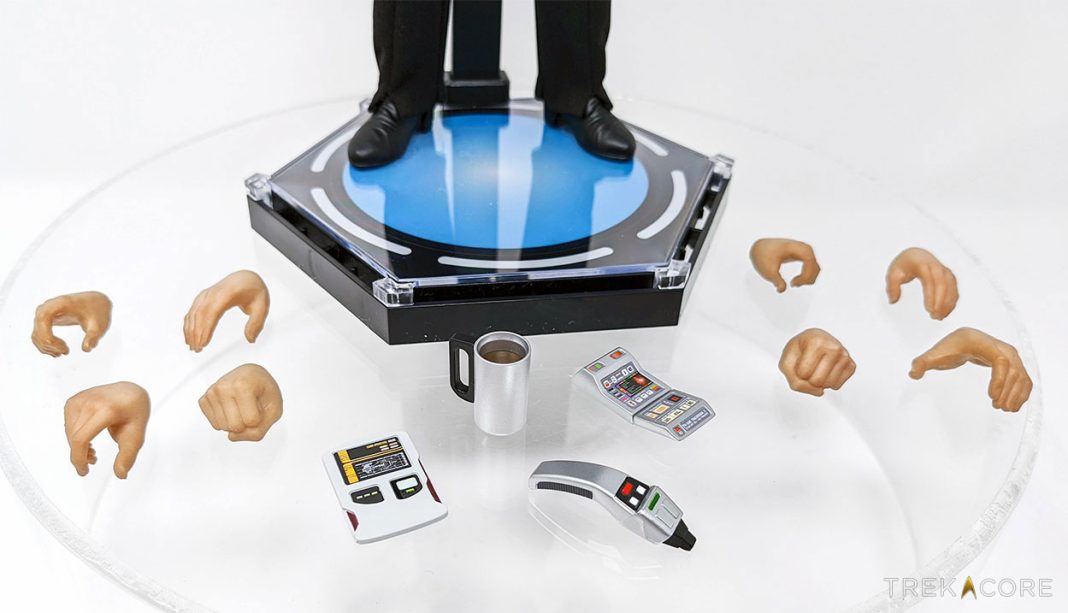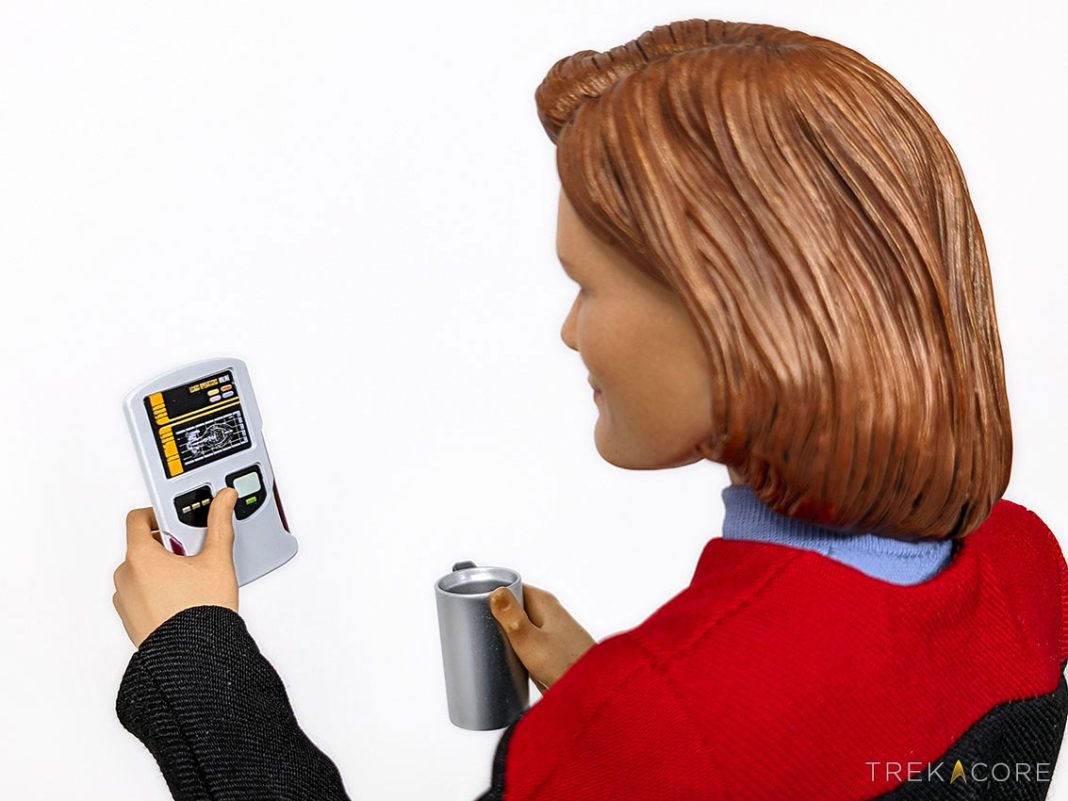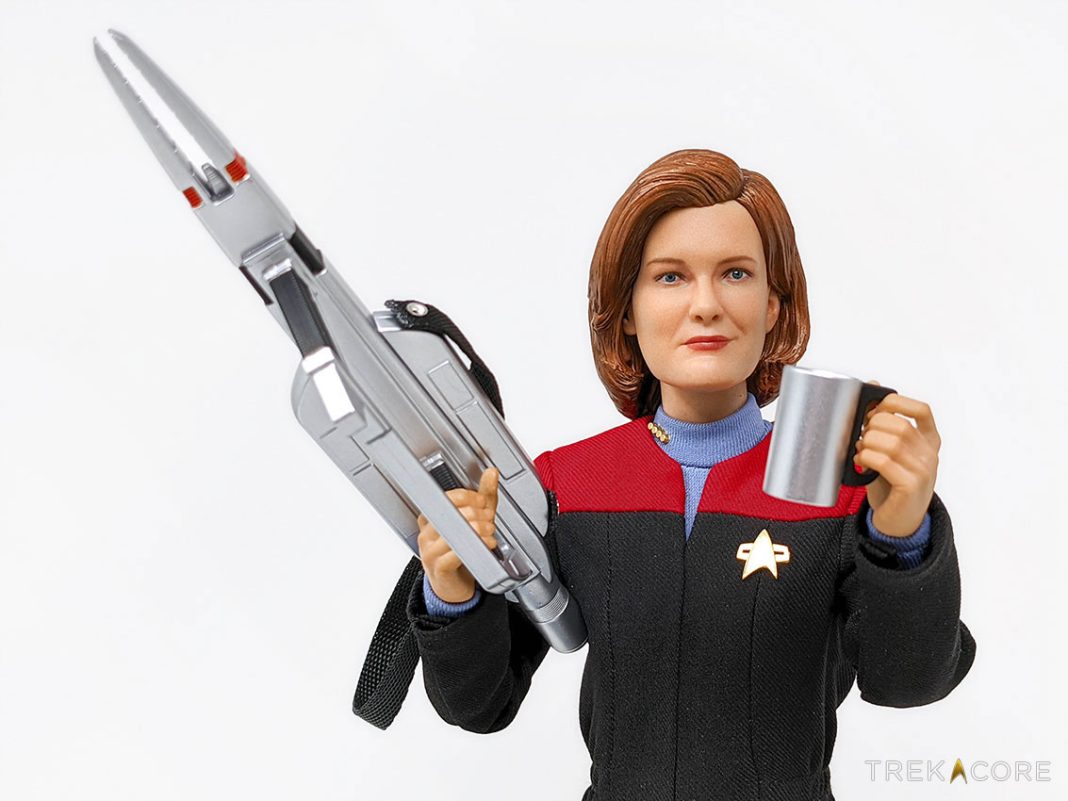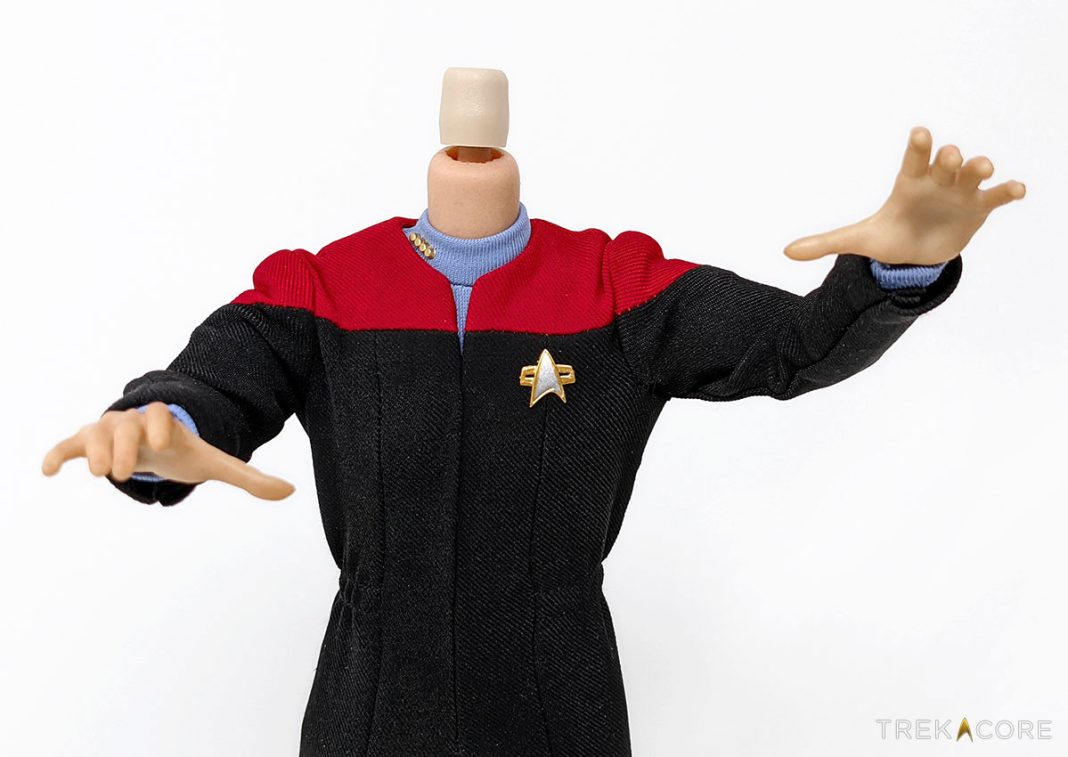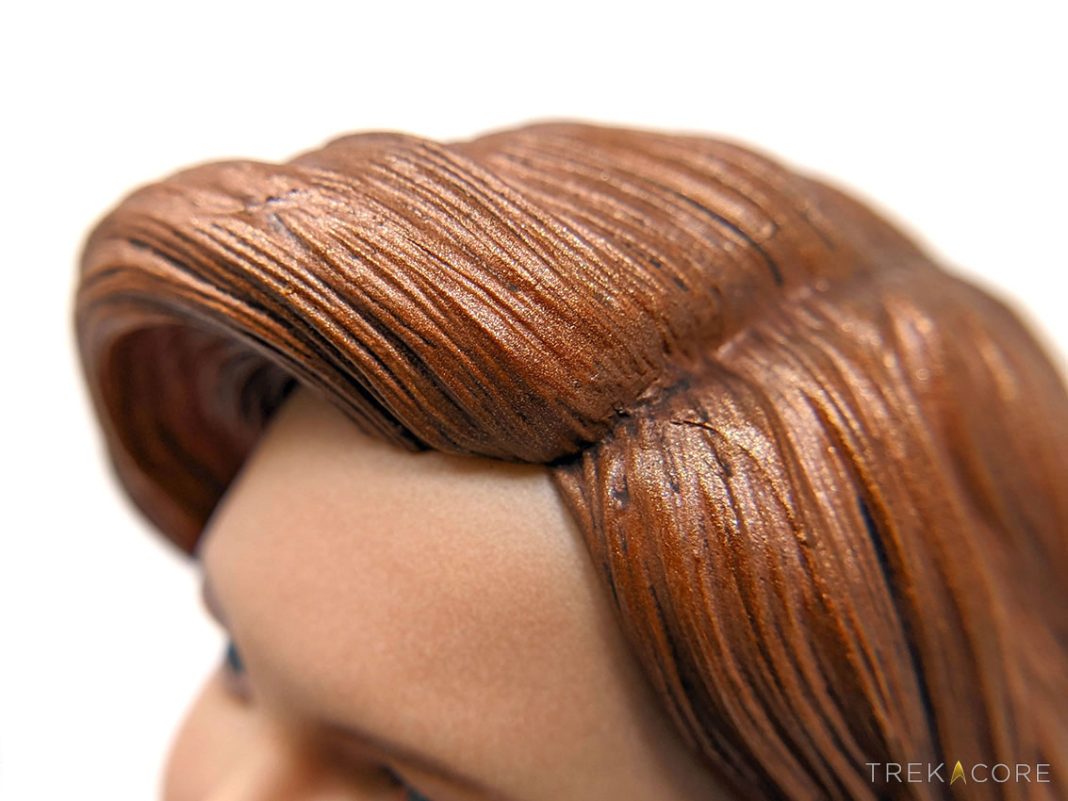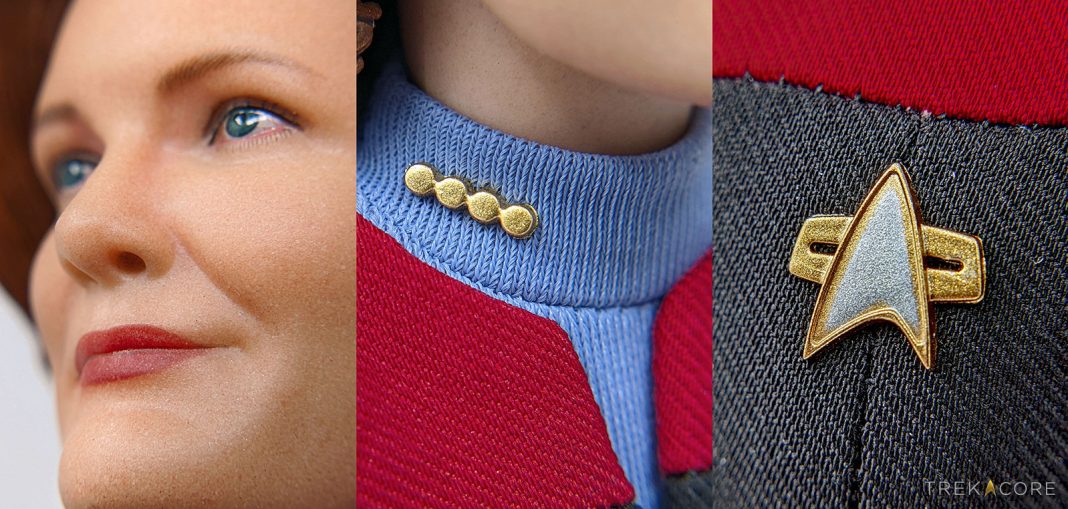with Alex Perry
We’re back for the second half of our extended interview with Star Trek: Prodigy writer/producer Aaron J. Waltke, after our discussion last week about his challenging episode “Kobayashi” brought back members of Trek crews of years past for a rousing holodeck experience.
Today, explore the writer’s Star Trek roots, the creation of the Star Trek: Prodigy crew, and unanswered mysteries in the animated series’ early episodes.
This interview has been condensed and edited for clarity.
TREKCORE: Before we dive back into Prodigy, tell us a little about how you came to Star Trek — because you’re clearly a massive fan of the franchise.
AARON J. WALTKE: Well, my dad is a Trekkie through and through. He was one of those guys that in college, I think, especially, he watched all of them in syndication. I was a latchkey kid growing up and my parents would dump me at my aunt’s house who, in turn, was busy with stuff. She’d just plop me down in front of the television and turn on PBS thinking it would be educational, but then in the afternoons, PBS would show the original Star Trek.
I would just be there enthralled, just watching people doing kal-if-fee death matches. It was an incredible, I guess, exposure to all these crazy new ideas and science fiction and elsewhere that I’m very glad that I had that in addition to just coming home every day after school and seeing Next Generation and Deep Space Nine in syndication on my local Fox affiliate.
I got to basically binge-watch Deep Space Nine during a time when they didn’t have a word for that. Basically, all the criticism of, “Every story is connected and I have to wait a week to see the next one,” I just missed all that. I was like, “What are you talking about? There’s one every day and it’s the best story ever.”
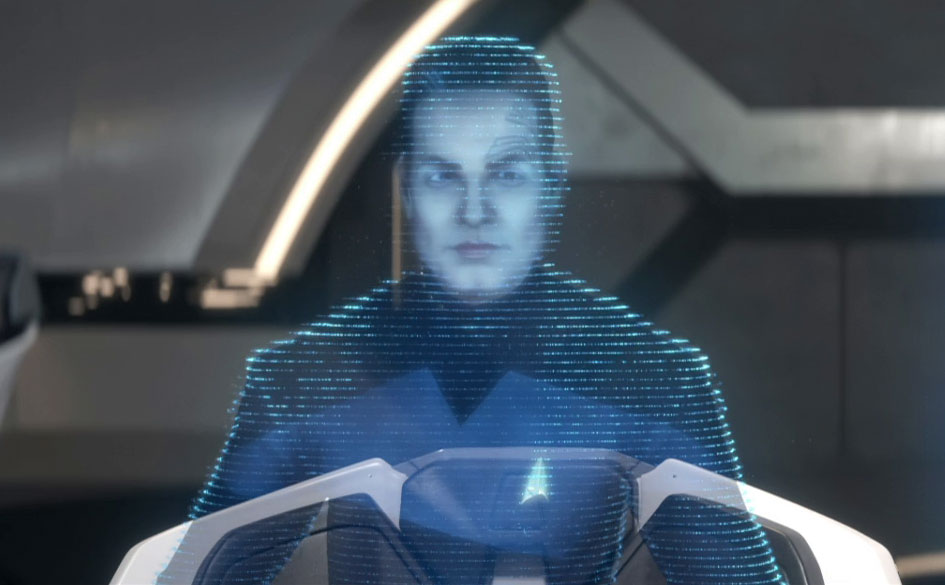
TREKCORE: And now, through Prodigy, you’re writing for the Voyager cast — Kate Mulgrew as a holographic version of Janeway, and Robert Beltran as the real Chakotay, and hopefully some more down the road. What’s that been like for you as a longtime fan?
WALTKE: It’s so funny answering that question as I’m the co-head writer of the second season now; I can’t say anything beyond just what has already been said, which is there are more legacy characters coming.
Chakotay was always an interesting character that had a lot of unexplored potential. I think that the chance to work with that character and breathe life into him again — and give him a more resounding purpose in the post-Voyager space — has been nice, and it’s meaningful even to the actors portraying the roles to give their characters a second journey.
That goes for Kate Mulgrew as well, who has been very supportive of everything we’ve been doing. She came on board, I think, initially saying, “Oh, this will be fun.” Now she comes to us constantly saying, “This is incredible.”
To hear that from Captain Janeway herself is indescribable. I am from Bloomington, Indiana, where Janeway is from — I grew up visiting my grandparents next to where Janeway was supposed to be born, and I was the first person to donate to that Janeway statue Kickstarter fundraiser.
When I was studying at Indiana University, Next Generation writer Lee Sheldon was teaching there, and the Lilly Library had just had received a donation of Jeri Taylor’s effects. She donated everything there. I literally learned how to write screenplays by reading her personal drafts with the annotations of Voyager scripts and stuff.
TREKCORE: Are there any standout Trek episodes that has influenced your writing on Prodigy?
WALTKE: The two episodes that come to mind that I dreamt about and thought about for ages and ages were “Elementary, Dear Data” and its companion “Ship in a Bottle.”
Those two Next Generation episodes were very informative to me as a child because basically, it was challenging me to say, “Hey, what if your video games became real and demanded rights?” and I didn’t know how to do that.
I was like, “Well, Moriarty should have rights. He should get out.” It devastated me when he didn’t at the end — and to this day I want to write an episode where Moriarty gets out and helps the crew or whatever.
The other episode I think was probably the start of my deep and abiding love of time travel was “Time’s Arrow.” That two-parter really warped my brain where I was just like, “But Data’s head is 500 years old and he just put it back on?”
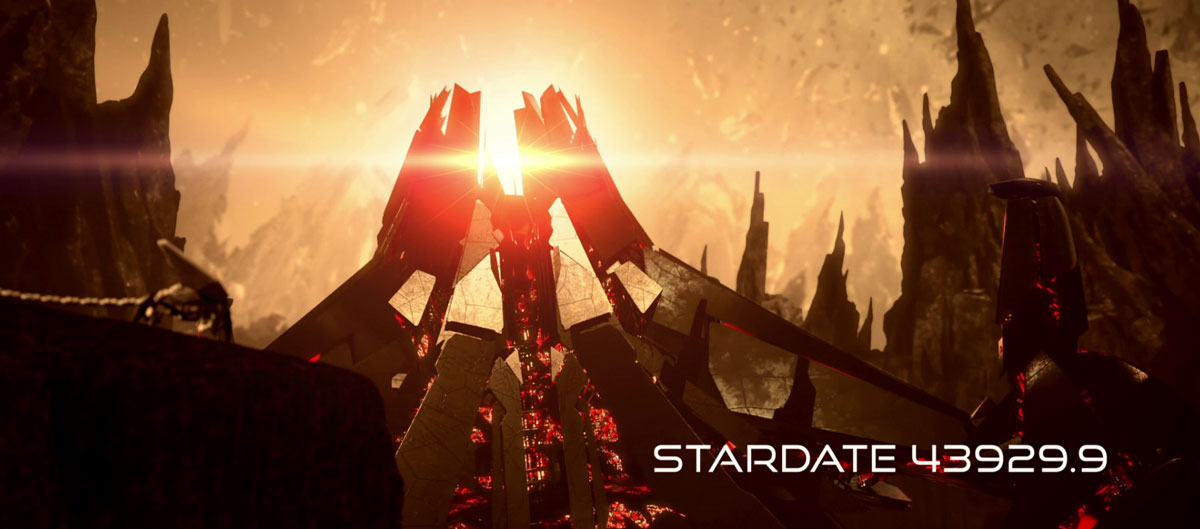
TREKCORE: The reveal that the Diviner has been looking for the Protostar for more than 17 years — well before Voyager even launched — does have a very “Time’s Arrow” vibe to it!
WALTKE: Yes, I can’t help it! I’m almost certain that is consciously influenced; “No, this is totally Star Trek — because it’s my favorite Star Trek!”
As far as the 17 years flashback scene, and the Chakotay reveal, it many ways that whole section of “Kobayashi” was in may ways a second pilot for the show. If you watch “Lost and Found” through “Terra Firma,” it’s basically a two-hour movie — ending with, “We got away from the bad guy in our new starship… now, what’s our future?”
I think it was an interesting, fun challenge, but something I’ve always loved on any TV show I’ve written on. I like to go for the “scraps,” the little moments that aren’t the big hi-concept sci-fi craziness; I think Lower Decks showrunner Mike McMahan has talked about this too — some of his favorite Next Gen moments are when somebody was just sitting in Ten Forward, having soup or something.
I love that I got to do that a little bit in “Kobayashi” with Gwyn and Zero, because I feel like their relationship was something I really wanted to explore — especially with Zero who is someone who is I think, in an abstract sense, perhaps neuro-atypical.
Gwyn is justifiably dealing with, if not depression, then at least trauma — and the two of them finding that together from different perspectives are helping to inform and lift each other up. They’re filling in each other’s weaknesses and becoming each other’s strengths, which I think is Star Trek at its core.
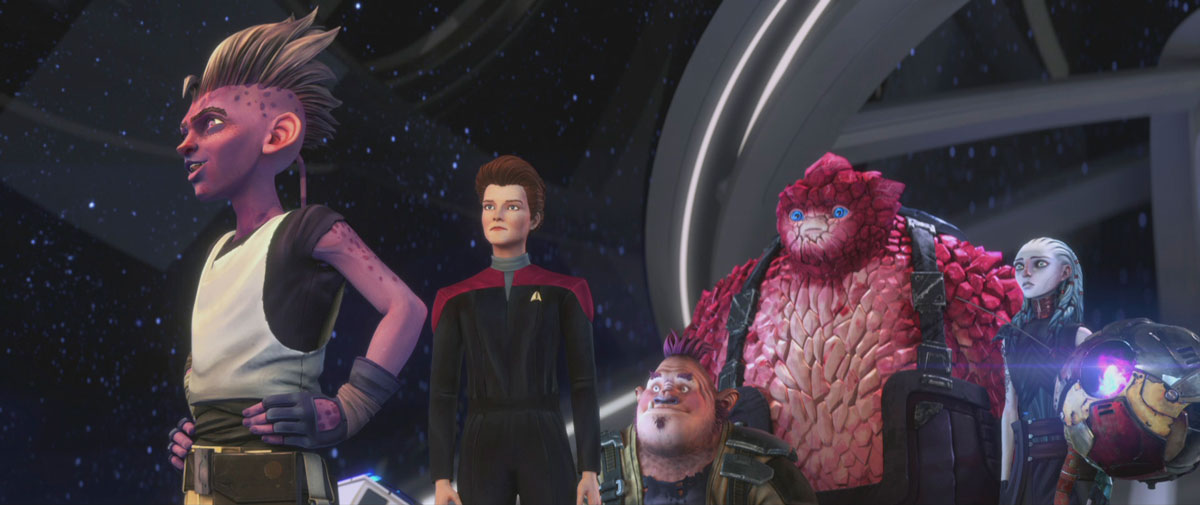
TREKCORE: Let’s get into the Prodigy characters — how planned out are their development and story arcs?
WALTKE: As with all the shows I’ve worked on with the Hagemans, we did a light serialization where each episode has its own identity — and a beginning, middle, and end or a character arc. There’s an ongoing mission, or story, or want, or need, that we broke up into many little seasons — and for Prodigy, we have 10-episode arcs.
In each story arc, we then look to identify the midpoint, where the characters start, and where do we see them ending up at the end of the series — and we also look at each character’s goalposts for character growth by the end of this season.
It was just constantly talking about how can we make sure that each character is different and have their own personality and their own shortcomings, but also things that they might like to learn on the natural promise of this television premise: they’re kids with a starship, finding purpose and meaning in working together and scientific curiosity and exploration, while also defending freedom and exploring their individuality in ways that maybe they never had the opportunity to before.
From there, that’s how we organically arrived at ideas like, “Oh, what if Rok-Tahk was always perceived as this big hulking behemoth that everyone assumed would be the security officer… but actually has an interest in animals and Xenobiology and science?”
As for Zero, we looked at that character as one that everyone kind of misjudges. In “Is There in Truth No Beauty?,” the characters were very judgy in how they describe Medusans in that episode: “Oh, they’re the most hideous things you’ve ever seen! Oh, come on, they’ll drive you mad!”
I understand that was 1960s-speak for a character who was perceived purely through the effect they have on others — but while that might be a part of Zero, they are someone who is also empathic and telepathic.
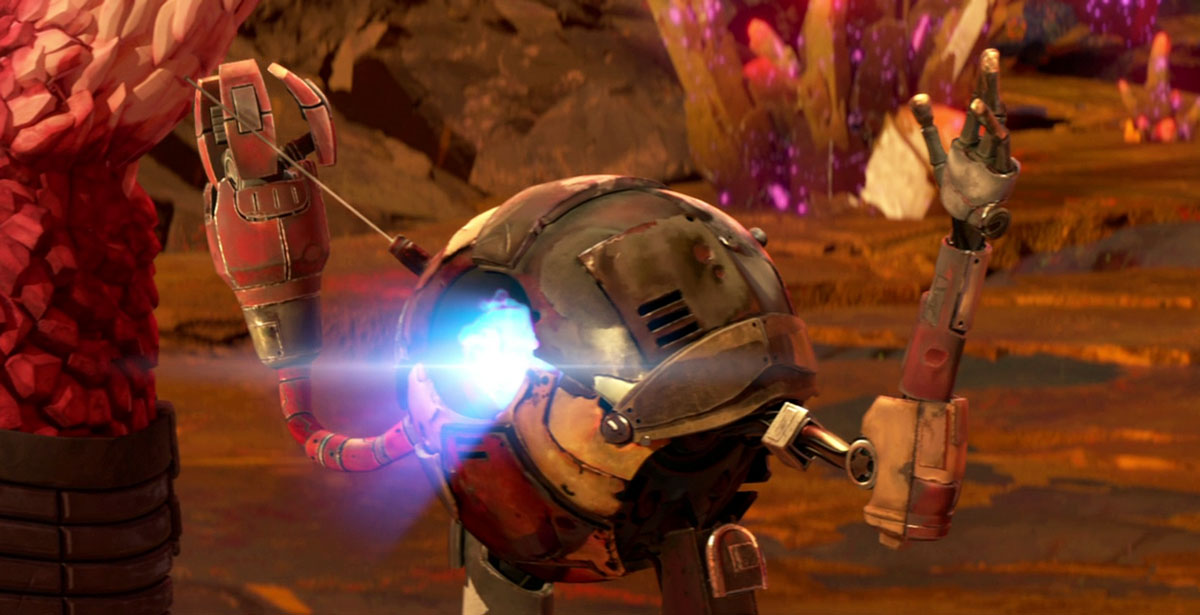
In the original episode, the Medusan character of Kolos is never really given a voice. So with Zero, we had a chance to explore that. Someone who hears everyone else’s emotions and thoughts and feelings and corporeal desires, but maybe can’t participate in that until they find a way to change themselves by creating a space in which they can grow as beings, corporeal or not.
It was always finding little nuances that worked both in a physical metaphor and in an emotional one and then seeing how they might slowly cohere together and as I said, fill in each other’s vacancies in a way that that felt organic and natural.
I think we were thinking very deeply about what are some surprises that we can have for these characters and what are some good messages that we could have ultimately with any story of self-discovery.
TREKCORE: You also introduced the idea of a Medusan ‘hive-mind’ in “Kobayashi,” could you tell us a little more about that?
WALTKE: Oh yes! I will say that is my contribution to Star Trek canon. In the early days when we were building out a lot of the lore for our alien races, either established or new like Gwyn’s race, the Vau N’Akat, everybody in the writers’ room had some very strong contributions.
I do recall in terms of just the very basic ground rules of like, “What was Vau N’Akat society like? What are Medusans like?” Fellow writer Shawna Benson I were were very much in that world-building phase in those first couple of weeks.
Medusans are non-corporeal telepathic creatures, so it felt very organic to think that they would be a bit of a collective — not unlike the Borg or the Dominion. I picture them as having a bit more individuality when they’re in the hive-mind, unlike the Changelings or the Borg.
The Changelings seem to prize just becoming part of a whole, and Borg are like, “You have no identity, there is only the will of the Borg queen.” In my mind, the Medusans are a little bit more holistic… maybe a little more like a hippie commune.
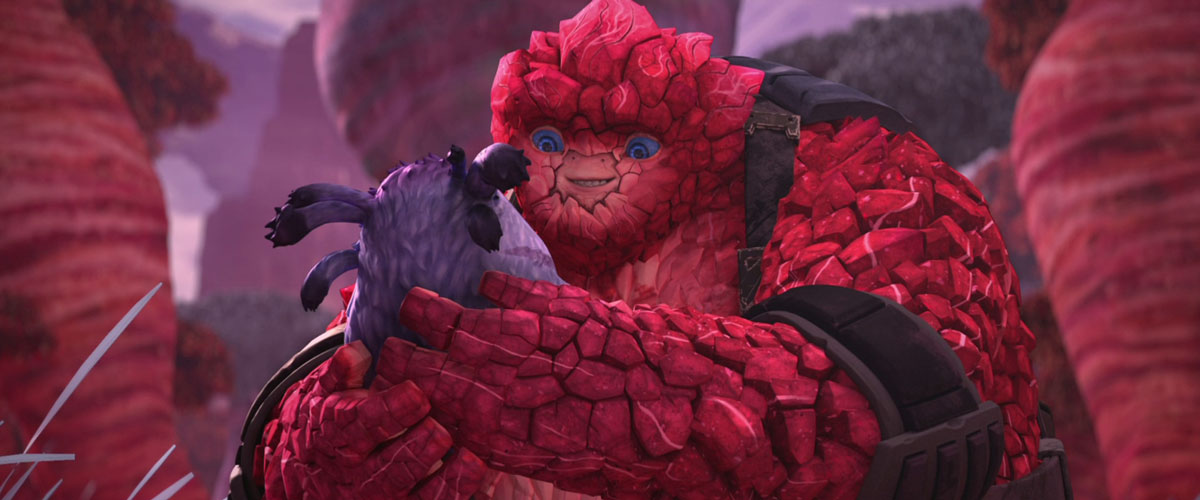
TREKCORE: Trek novel fans got very excited when we learned Rok-tahk was a Brikar, a race from the New Frontier book series. Are you continuing to look at those kind of tie-in works as sources for inspiration?
WALTKE: Absolutely. Longtime Star Trek novelist David Mack was very helpful in that in the first season as we were trying to get our bearings as far as what’s possible and what people have already been thinking about in the wider Star Trek universe over the past 50 years.
The short answer is, whenever we are saying, “Okay, we know up to a point, this is how something works…” and then beyond that, inevitably, there’s been five novels that have also explored that — or fan canon, or comic books or whatever. Then we can pick and choose our lane; if we find something that’s already a good idea, we don’t feel that there’d be any reason to negate that.
If anything, we would rather just build upon it and say, “Hey, thank you. That’s a great idea. Let’s work together and see if we can have that connect in!” Obviously, the on-screen material has to take precedence, but I don’t think we’ve ever actively just said, “Screw what the books say!”
If they have a good idea, we’ll happily try to incorporate them. We were trying to find what alien species would allow us to take advantage of this animated medium, in a way that have been hard to accomplish in the people-with-wrinkles-on-their-foreheads era of Star Trek, and and the Brikar were a fun idea we thought would be really interesting to explore.
You’ll find that we keep doing that, wherever we can. If everyone has unanimously agreed that, for example, one of the Vulcan gods has a name, but it’s only been mentioned in the books, why not use it when we need to?
Wherever possible, if we come across a great idea that is explored in ‘beta canon,’ we will use it — and “Kobayashi” is a great example of that. As much hullabaloo as has been made about the Kobayashi Maru and mystique around it in the Star Trek fandom, there’s actually not that much in on-screen canon about the rules to the simulation.
Most of what has been fleshed out about the scenario has been in the novels. I did have questions like, “Well, what if the person just refuses to participate?” Sure enough, there are a few novels, including The Kobayashi Maru, that explore that. In the book, the crew mutinies when Sulu refuses to participate, and you see an echo of that that in our show when Uhura and Odo threatened to resign.
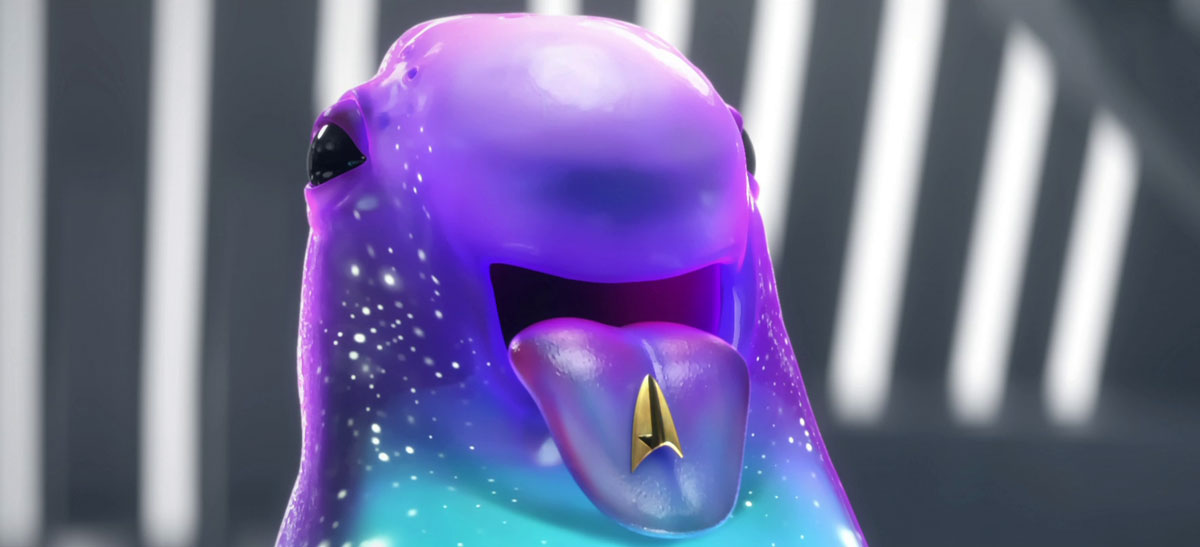
TREKCORE: Were you prepared for how much people have come to love Murf?
WALTKE: Oh yeah, and the story of how Murf came be part of the show is so fun. I was brought in very early in the process, when the Hagemans had written a first draft of the pilot. A lot of it was just a survival adventure that was focused really on Dal and Gwyn, and a lot of the pieces hadn’t totally come together yet — and Murf was not in that first draft.
I remember we were trying to find ways to infuse some joy into the story, for lack of a better term; We were trying to find ways to make Dal’s adventure fun, but keep that cocksure adventure-y kind of feel to it.
At one point in the pilot, we had suggested Dal doesn’t make it back to the ship right away, leaving Zero and Rok-tahk to think, “Well, we have to find a replacement.” When he finally makes it back to the Protostar, he sees Murf sitting in the captain’s chair, and he’s like, “You replaced me?!”
We had to decided if he was just going to be a one-off character, or part of the crew. Then as we actually started to actually explore Murf’s role on the ship, we thought that it would be fun if the other characters weren’t sure if he was a real crewmate, or just a pet; if he’s the most intelligent being in the world… or literally just a slug? It made us all laugh so much.
It became this enigma, and then it became a running joke that Murf would be the key to everything — and the more we played with it, the more we realized that he was a missing component in a way, because it gave Rok-Tahk someone to focus her love of animals upon… but also, any time a scene got a little too serious, you could just have, “Murf is eating the chair.”
Sure enough, kids love Murf, and we love Murf. I will give extreme kudos to the Hagemans for not being precious enough to say, “Hey, we can’t just add a new character!” As soon as the room pitched it, they were like, “This is funny. This is really good. We needed something like this.”
We started working Murf into the rest of the show from there on forward, and I think you’ll be surprised even the places that Murf goes.
TREKCORE: You’ve hinted that Murf’s origins come from Trek canon, but he’s not a race we’ve seen before — are we going to learn more about him soon?
WALTKE: When I tweeted about that, people lost their minds a little bit — there were a lot of theories! Of all the guesses that I’ve seen, so far only one person got it right… but I won’t say who.
You will find out what Murf is, I’ll say that; but for sure, it is probably the most obscure reference we possibly could have made.
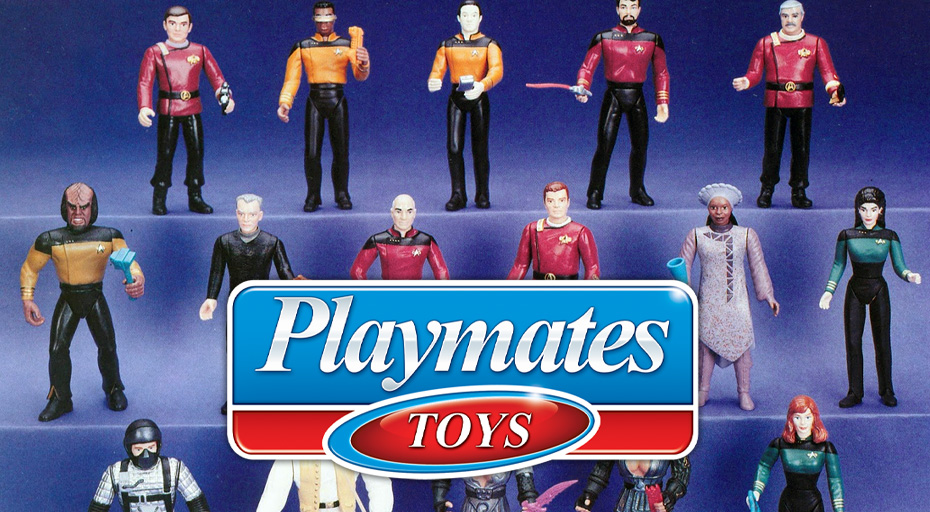
TREKCORE: Playmates Toys is returning to the Star Trek franchise in 2022, and Prodigy is included in their new product license. If you could pick anything to have as a Prodigy toy, what’s your choice?
WALTKE: This is not as theoretical as you might think… it’s tricky, because all of my answers are back behind non-disclosure agreements, but suffice to say I really want to see ships!
I know that ships will eventually come, but they’re probably going to do action figures to start — and I’ve seen the prototypes, which are amazing. Don’t you worry, they’re coming, and they’re going to be great! There’s a number of characters that I think people will be very excited to see as action figures.
But I mean ships are really my jam. I’m hoping that at some point Eaglemoss will make a version of the Protostar, and I’m curious to see if they’ll make two versions of the ship — one that shows the third engine. I’m sure there’s some engineer out there who’s already figuring out the specifics of how to get the tri-foil nacelles to open up perfectly.
I’m very excited, because I don’t know if you’ve seen the toy aisle lately, but there are toys out there that do crazy stuff. Obviously, the first generation of these toys might be standard, but they might even have some cool bells and whistles that would have blown me away as a kid.
I hope everybody’s excited for what’s coming.

Star Trek: Prodigy returns on Thursday, January 20 on Paramount+ in the United States, Australia, Latin America, and the Nordics, as well as on CTV Sci Fi Channel in Canada.
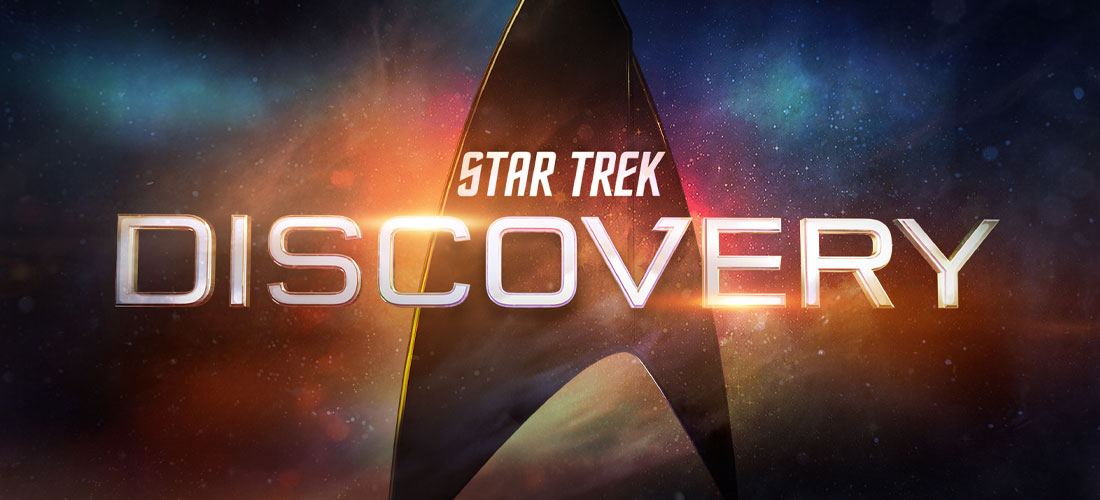 Following a few more weeks on hiatus, Star Trek: Discovery will be back with six more episodes starting February 10, bringing Season 4 to a close on Thursday, March 17.
Following a few more weeks on hiatus, Star Trek: Discovery will be back with six more episodes starting February 10, bringing Season 4 to a close on Thursday, March 17.
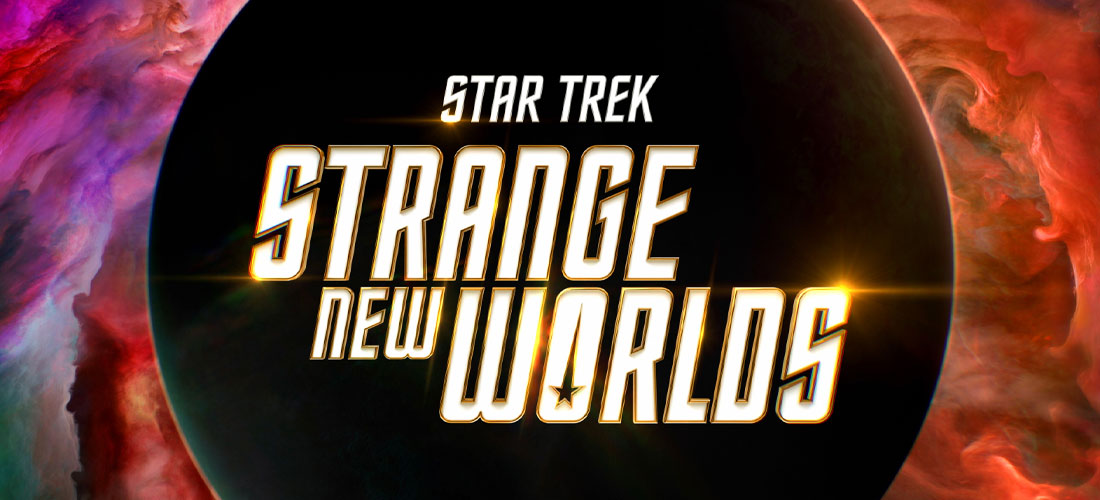
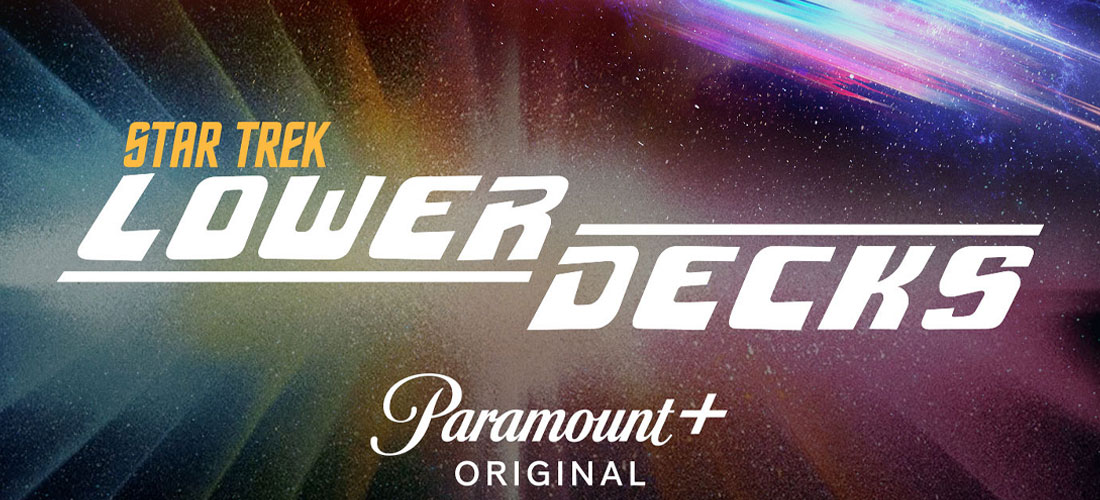

![]()

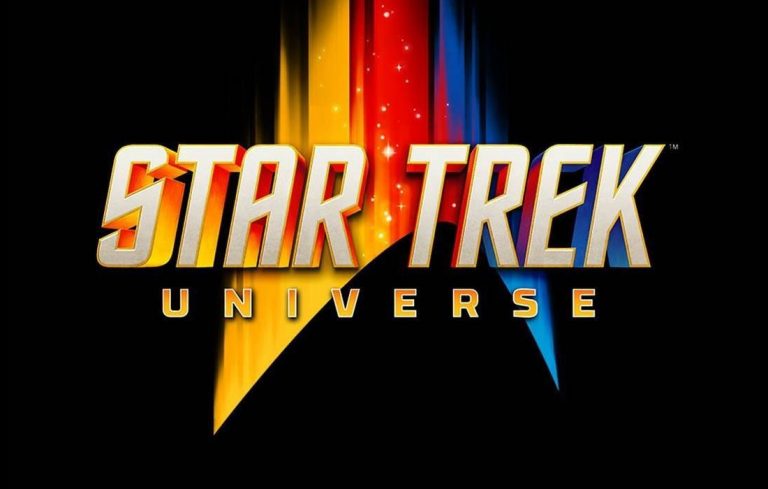
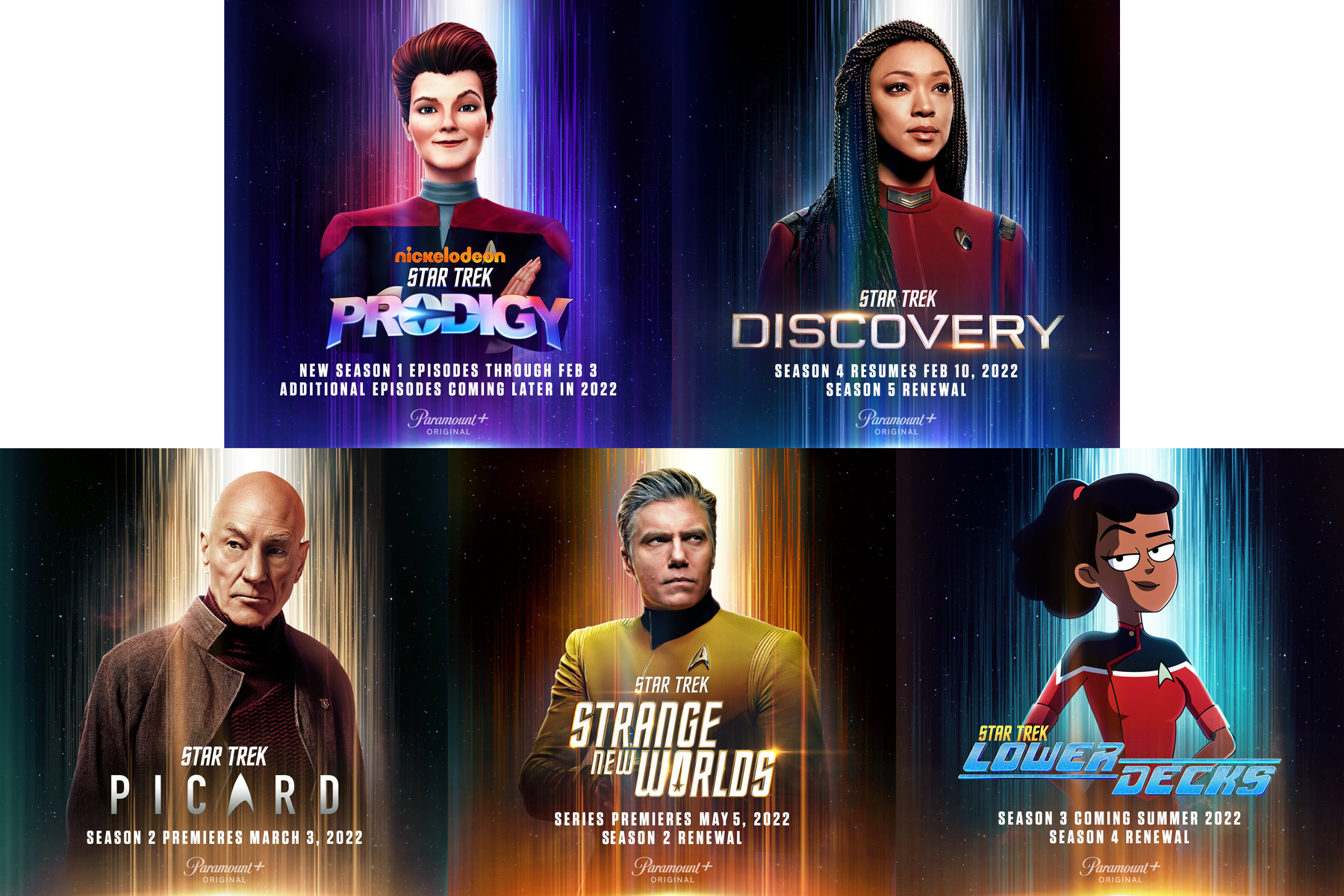
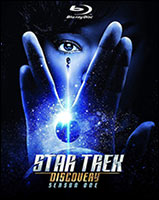 Star Trek: DiscoverySeason 1 Blu-ray
Star Trek: DiscoverySeason 1 Blu-ray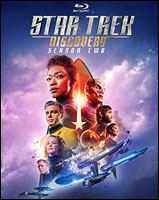 Star Trek: DiscoverySeason 2 Blu-ray
Star Trek: DiscoverySeason 2 Blu-ray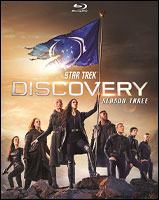 Star Trek: DiscoverySeason 3 Blu-ray
Star Trek: DiscoverySeason 3 Blu-ray